Famed as the only World Champion on both two and four wheels, he redefined the meaning of the words courage and luck by racing on tracks for real men and living until age 83 to tell it.
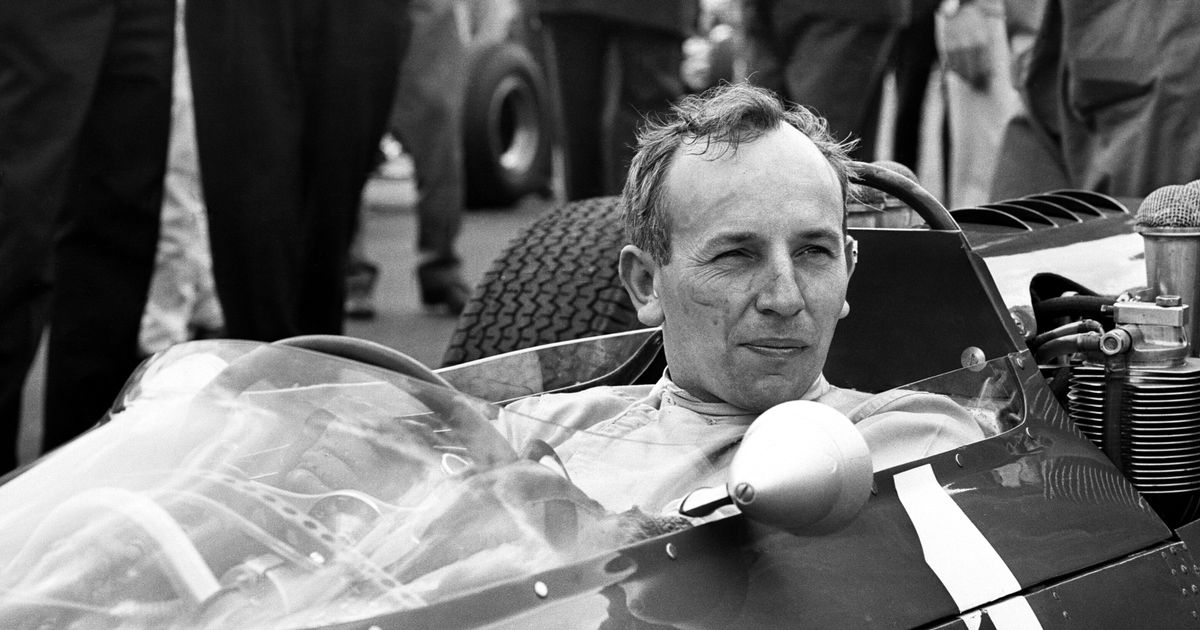
John Surtees rode motorcycles and drove F1 cars with equal skill and bravery. He made the leap from bikes to cars with surprising ease, though his quick climb to the pinnacle of motorsport was also the result of a great deal of hard effort by a serious-minded driver whose fierce independence ultimately proved to be a handicap. Text - Gerald Donaldson.
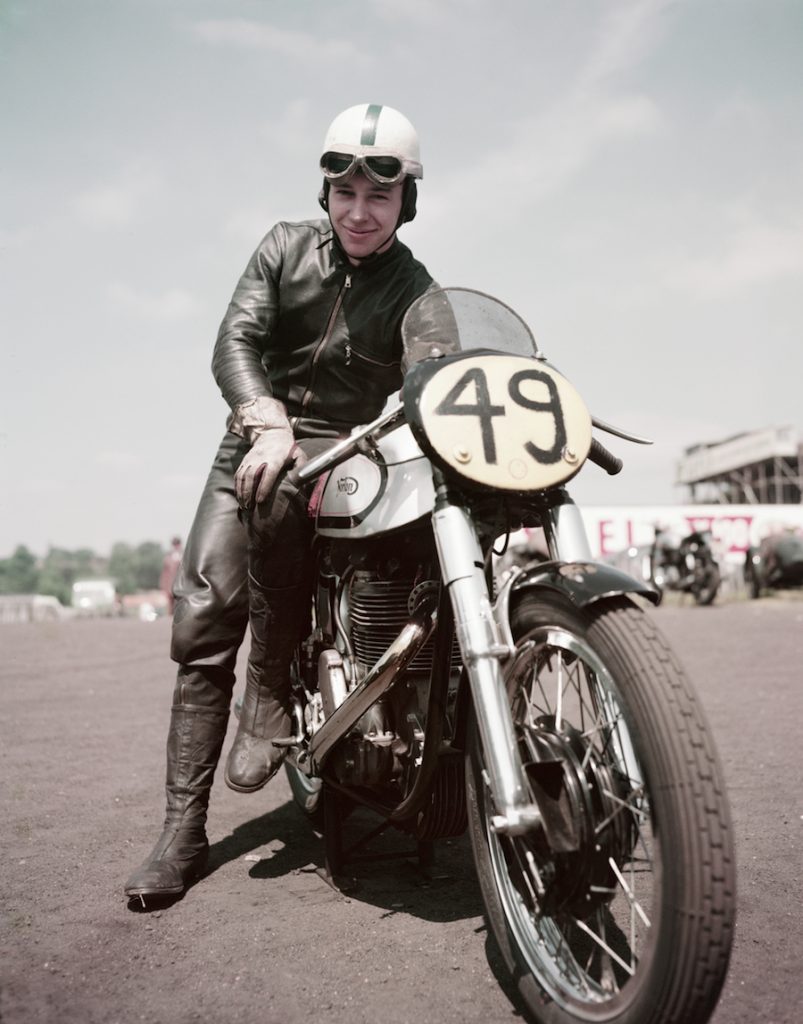
His family background gave John Surtees a head start on motorcycles. His father Jack, who owned a motorcycle shop in South London, was a three-time British motorcycle sidecar champion. The eldest of three children, John was born on February 11, 1934 in Tatsfield, England and, by the time he was 11, he had a bike of his own and could ride and repair it with equal skill. At 16 he left school and became an apprentice engineer at the Vincent motorcycle factory. A year later he competed in his first solo race and won it.
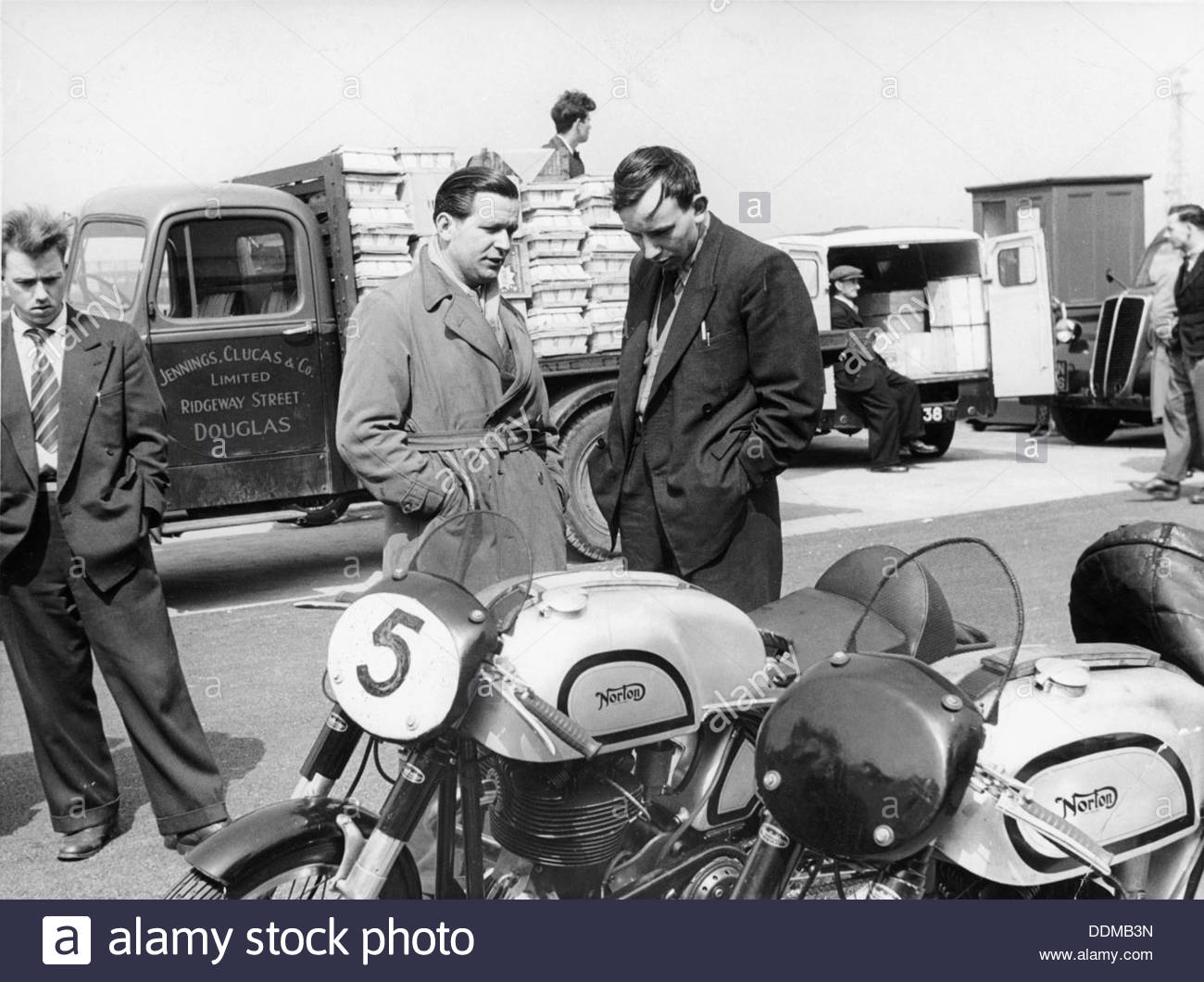
John Surtees with Norton motorcycles in 1954. Artist-unknown.
In 1955 he became a member of the Norton works team and rode to victory 68 times in 76 races. From 1956 to 1960 he raced 350cc and 500cc bikes for the famed Italian MV Agusta team and won seven world championships.
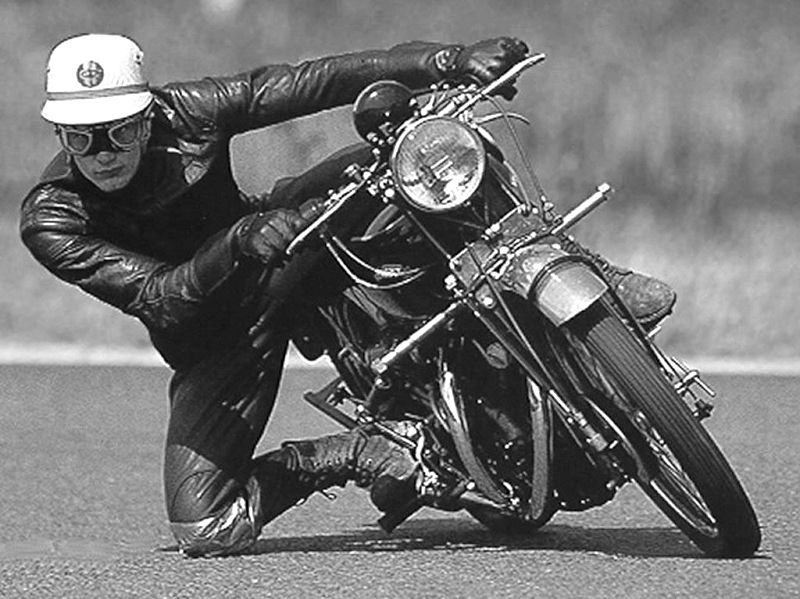
His transition to becoming a star in cars was nearly as swift.
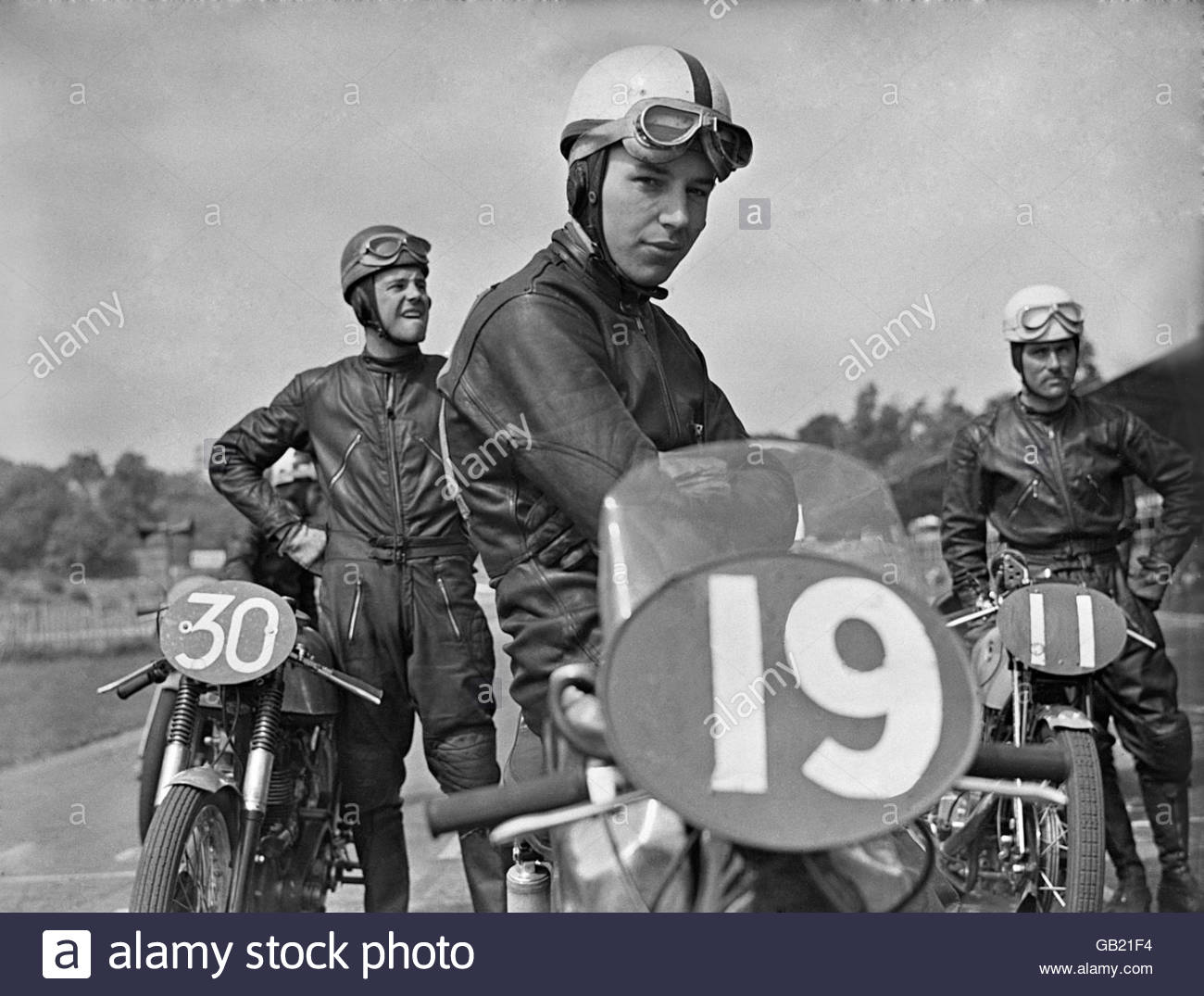
In 1959 the by now famous bike racer was given test drives by eager talent-hunters. In his first single-seater race, at Goodwood in a F3 Cooper entered by Ken Tyrrell, Surtees finished a close second to Jim Clark, then a promising beginner with Team Lotus, whose boss Colin Chapman promptly hired Surtees for the last four races of the 1960 Formula One season. His results - a second place in the British Grand Prix and a near win in Portugal - made Surtees a driver in demand.
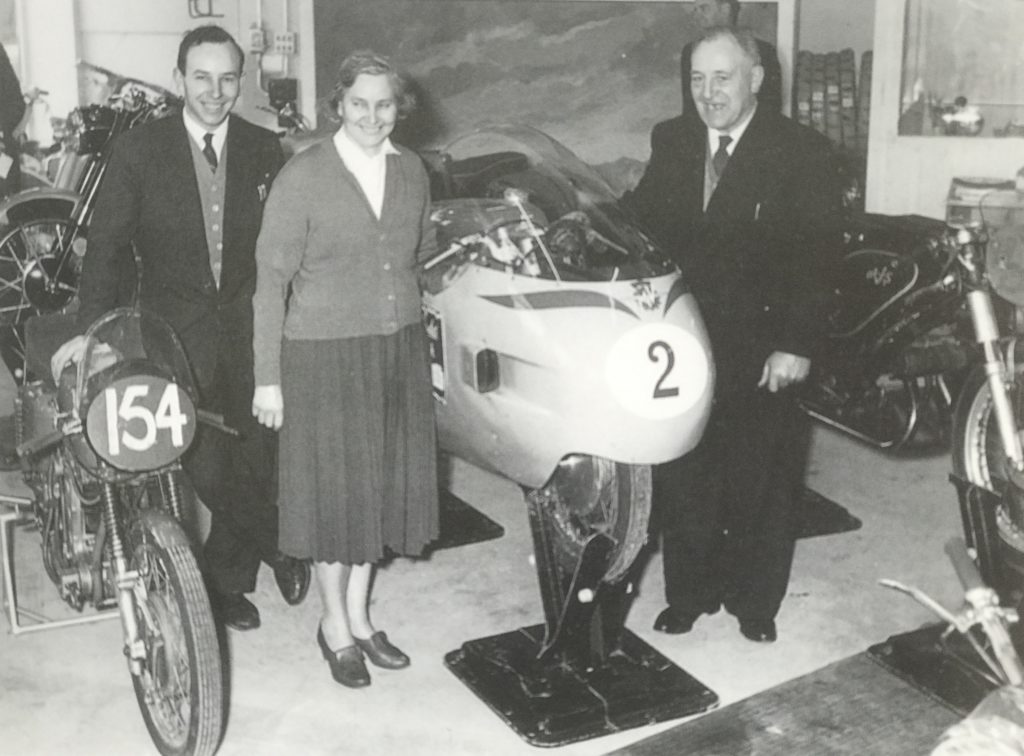
He stopped racing motorcycles and considered several Formula One offers, including one from Chapman to partner Clark at Team Lotus. Instead, Surtees opted to drive a Cooper in 1961 and a Lola in 1962, neither venture producing much in the way of results. However, his twin strengths of talent and tenacity kept Surtees in the limelight, especially in Italy, where the former MV Agusta star was now invited to lead the country's famous Formula One team.
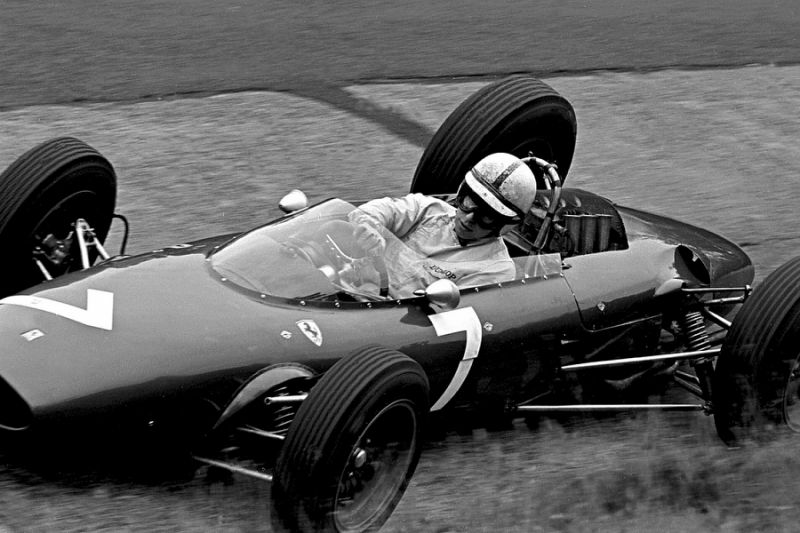
1963.
Enzo Ferrari (who had managed a motorcycle racing team in the 1930s) was a great admirer of the passion and fighting spirit shown by Surtees the bike racer and hired him as his number one Formula One driver for 1963.
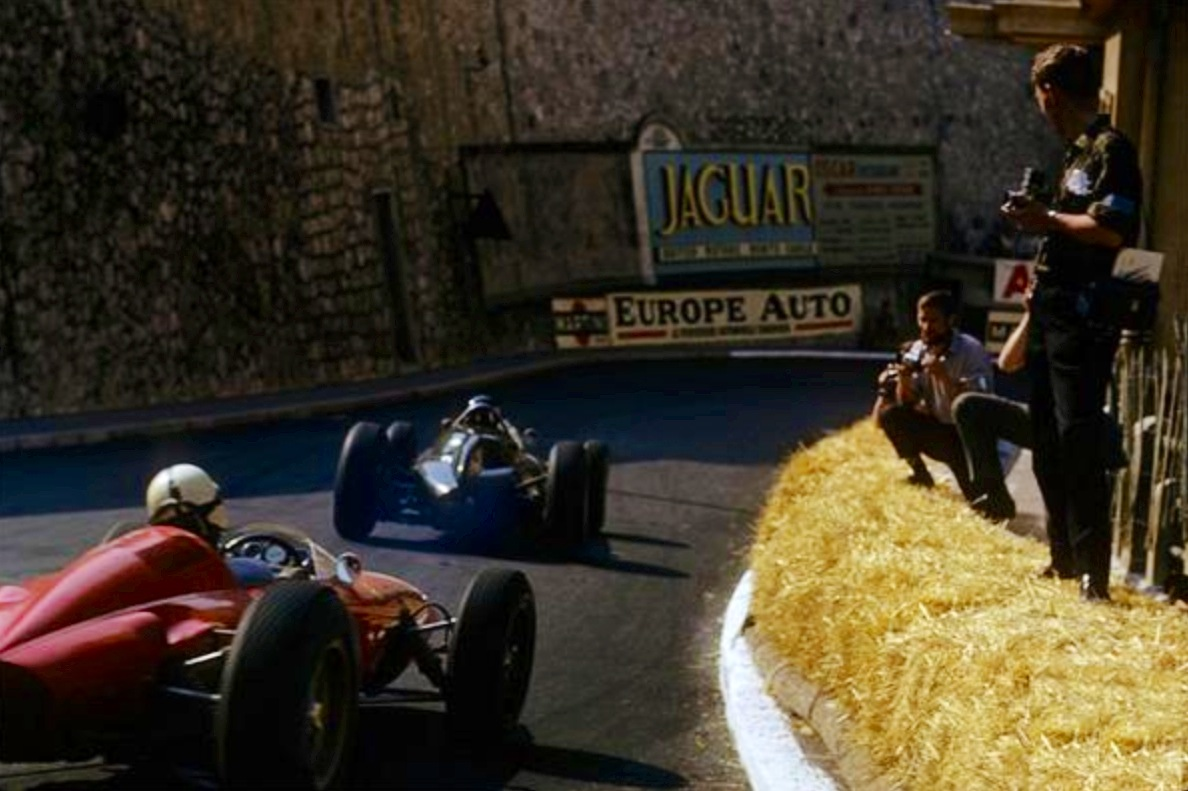
John Surtees chasing winner Graham Hill’s BRM P57 at Monaco Grand Prix in 1963. Unattributed.
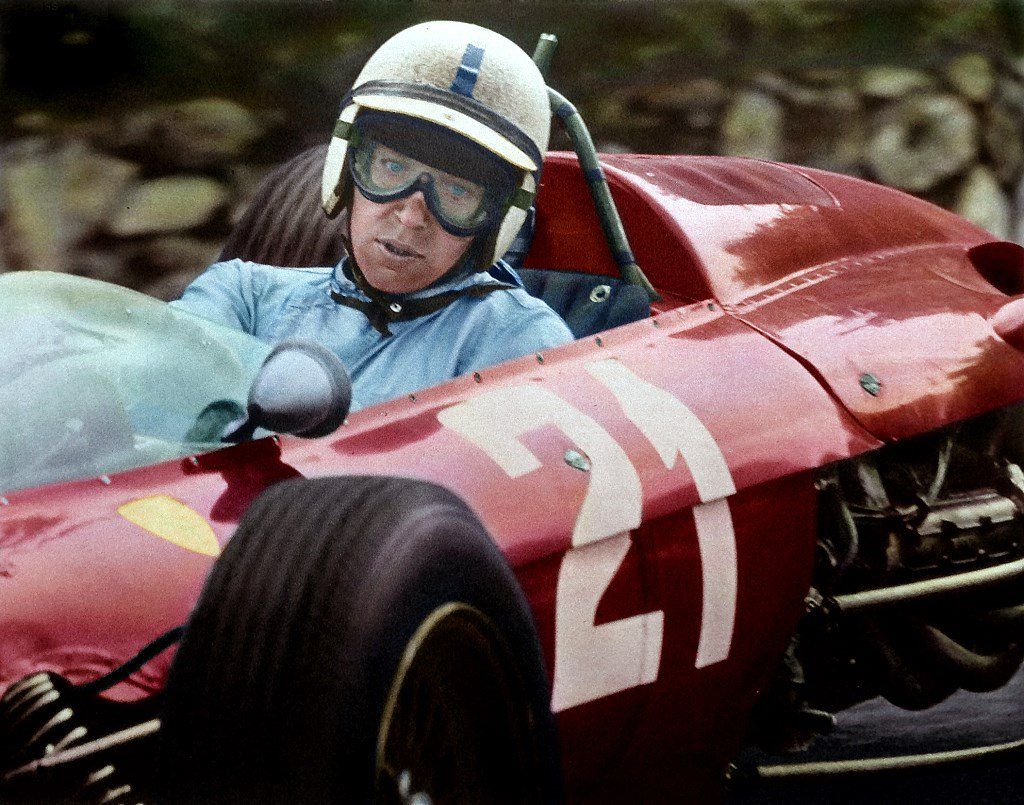
1963 Ferrari 156 at Monaco GP.
In that year's German Grand Prix at the mighty Nurburgring a ferocious fight with Jim Clark's Lotus resulted in a first championship win for John Surtees.
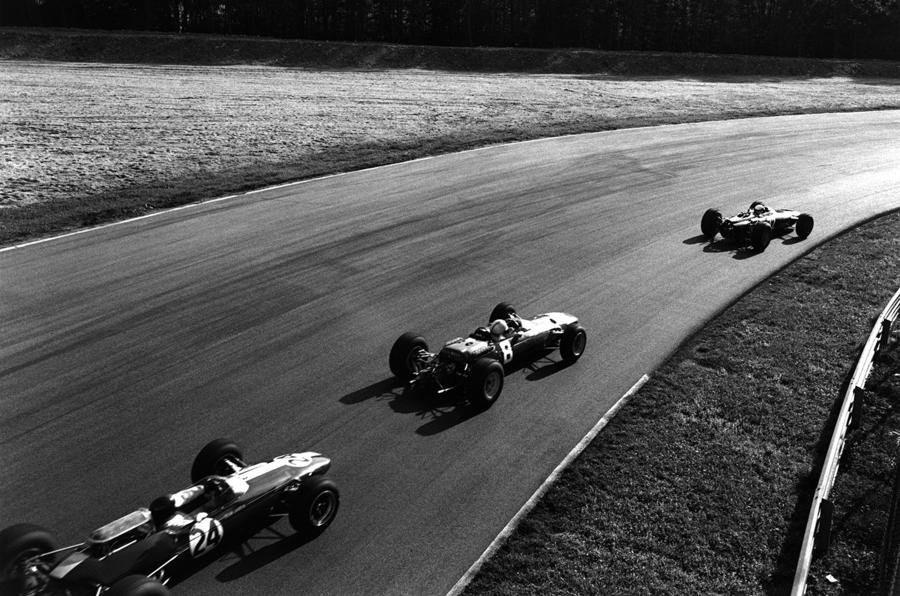
1964.
In Italy, the former motorcycle hero known as 'Son of the Wind' and 'John the Great' was hailed as Ferrari's saviour.
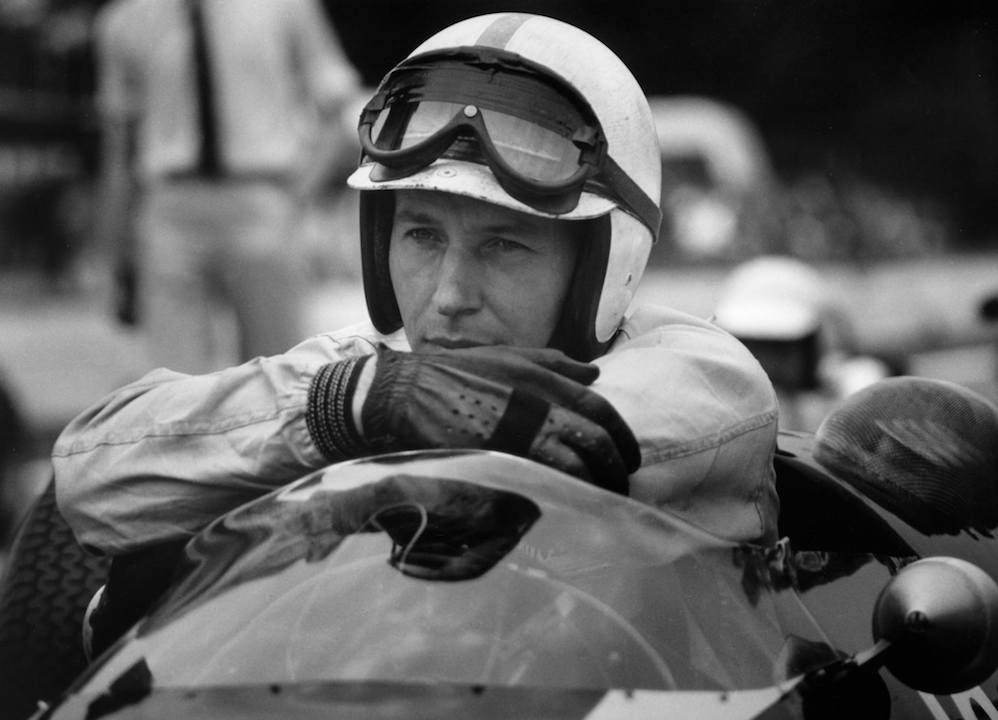
John Surtees F1 World champion 1964.
Nicknamed 'Big John' in English, he also became 'Fearless John' - particularly in 1964 after he won another brilliant victory at the daunting and dangerous Nurburgring, where he beat Graham Hill in a BRM. With another victory, at Monza, Surtees was in contention for the title. So, too, were his countrymen Hill and Clark, each of whom had also won two races. In their Mexican Grand Prix championship showdown Clark's Lotus was waylaid by an oil leak and Hill's BRM was accidentally shoved out of contention by Lorenzo Bandini's Ferrari, whose team mate finished second to become World Champion.
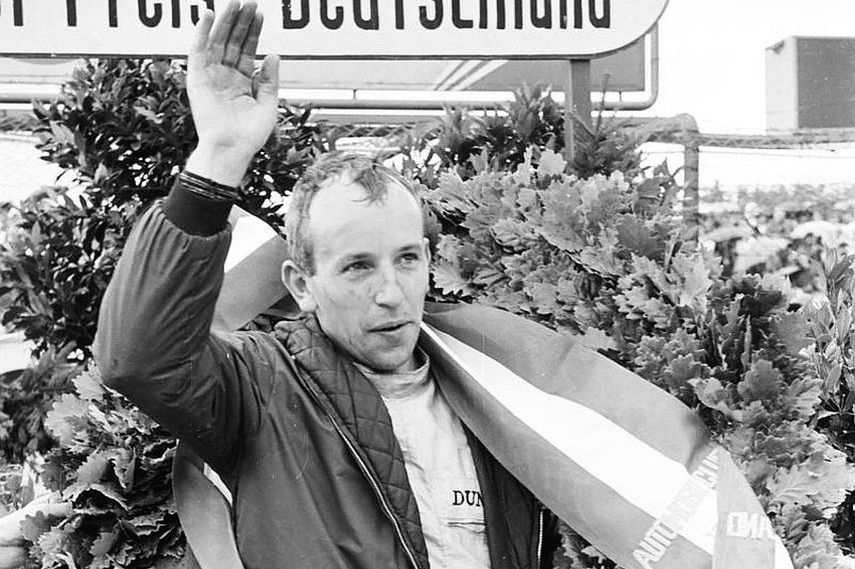
John Surtees champion.
For John Surtees, the satisfaction of becoming the first World Champion on both two and four wheels was only mitigated by the fact that he had clinched all his bike titles with race victories. Though he would win three more Formula One championship races, there were no more driving titles in his future. To some degree he was a victim of circumstances, though his feisty personality and fierce independence were also factors.
He developed a reputation for being argumentative and cantankerous. Certainly, he said what he thought and did not suffer fools gladly. While most drivers left their aggression in the cockpit, Surtees seemed to keep his 'race face' on, which could be intimidating.
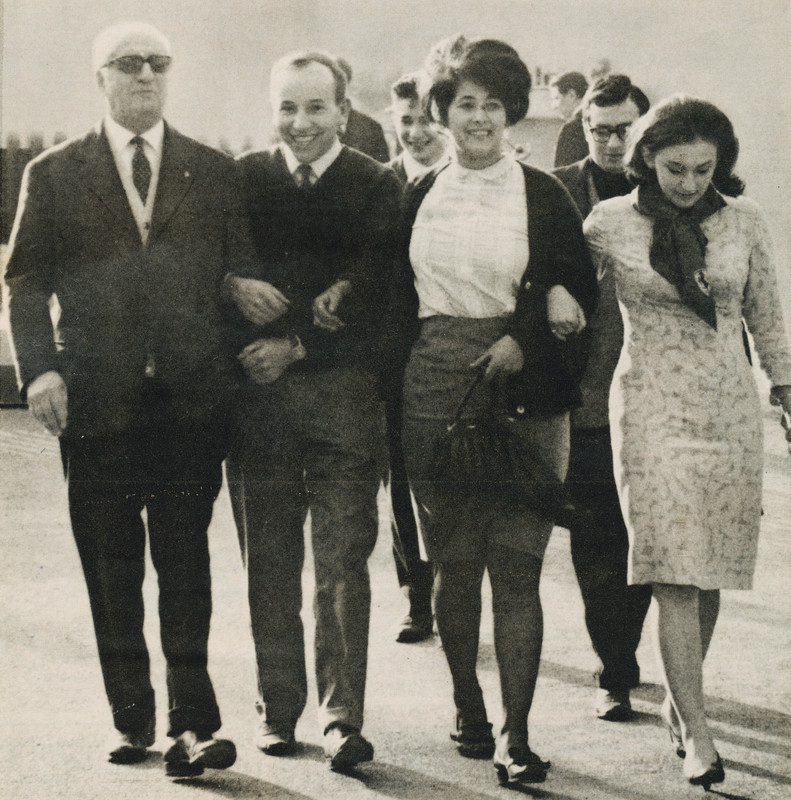
Enzo Ferrari, John Surtees and some vintage grid girls in 1965.
In 1965, when Ferrari's Formula One cars were less competitive, Surtees ran his own Lola sportscar in the lucrative North American Can-Am series.
Surtees finished 1966 with Cooper, for whom he won the season finale in Mexico, then spent two years leading Honda's new Formula One team. He helped develop the Japanese cars and was rewarded with a satisfying win in Ferrari's home race, the 1967 Italian Grand Prix at Monza, though Honda left Formula One racing a year later.
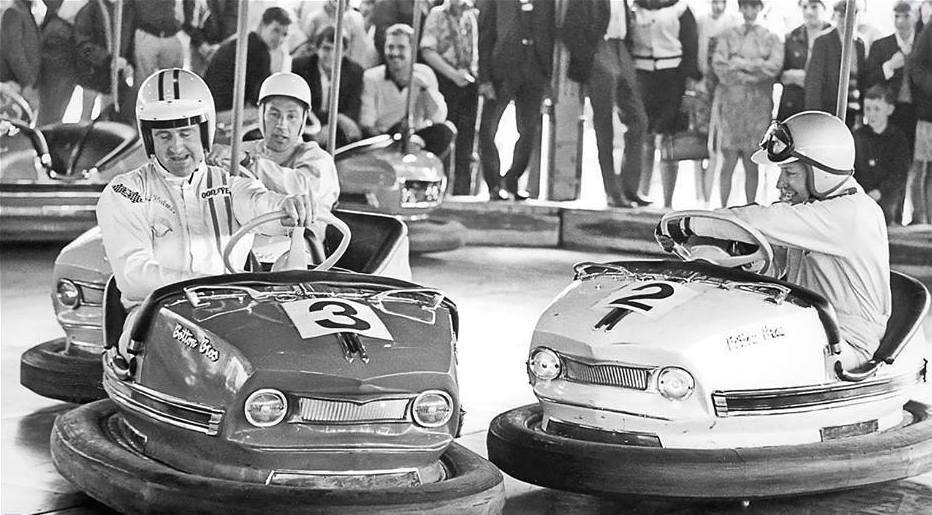
Denny Hulme, Stirling Moss and John Surtees on the dodgem cars at Battersea Fun Fair on July 30th 1968, filming for a Granada TV show called 'Nice Time'.
After a frustrating 1969 season with BRM Surtees decided to follow the lead of Jack Brabham and Bruce McLaren and form his own team, though he was destined to have much less success.
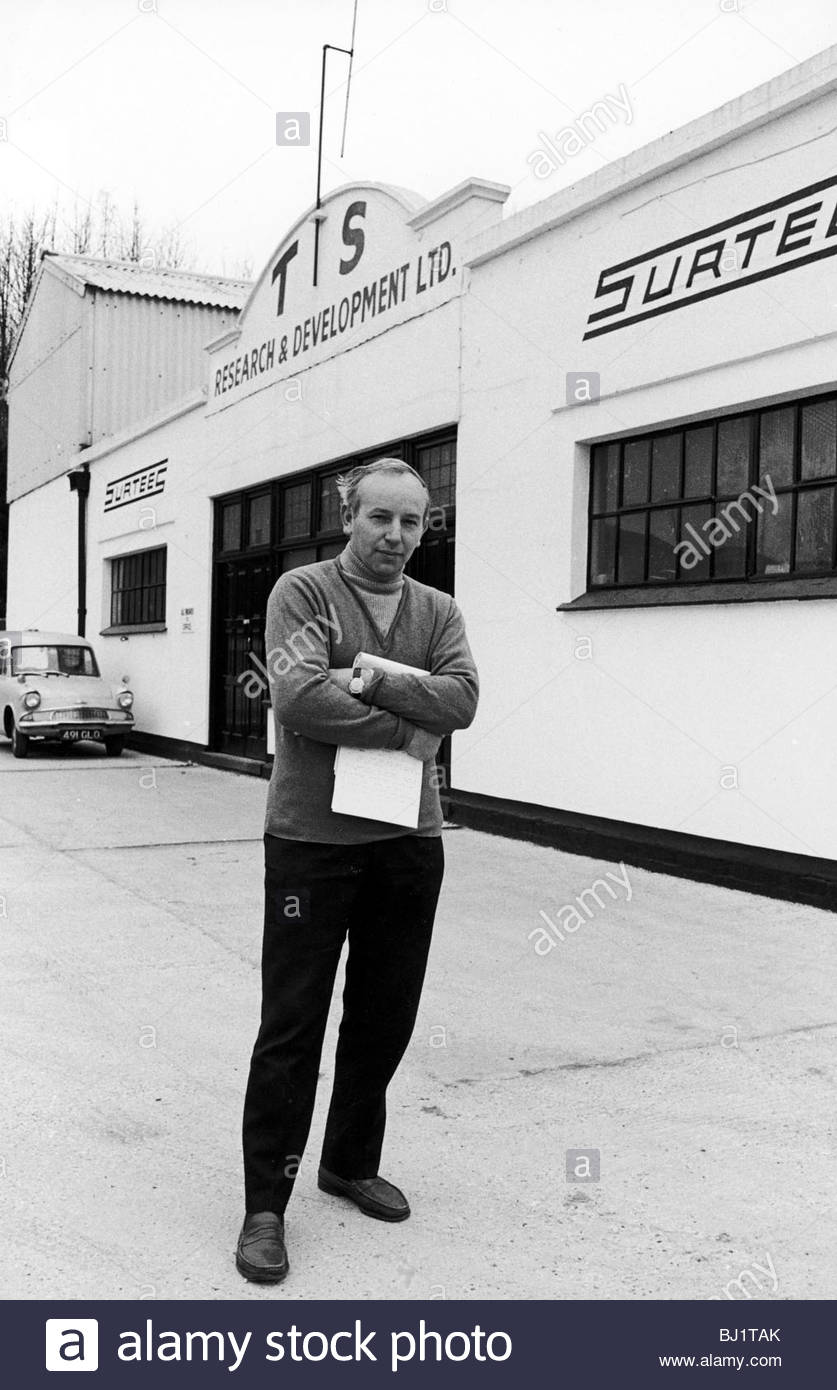
John Surtees in 1970.
In nine Formula One seasons the best results for Team Surtees were a second and a third for Mike Hailwood, himself a multiple world champion on bikes.
The Team Surtees boss retired from driving in 1973 to concentrate on trying to find more performance for his cars and enough money to pay for it. Not enough of either was found, despite Surtees pushing himself mercilessly the way he did as a driver.
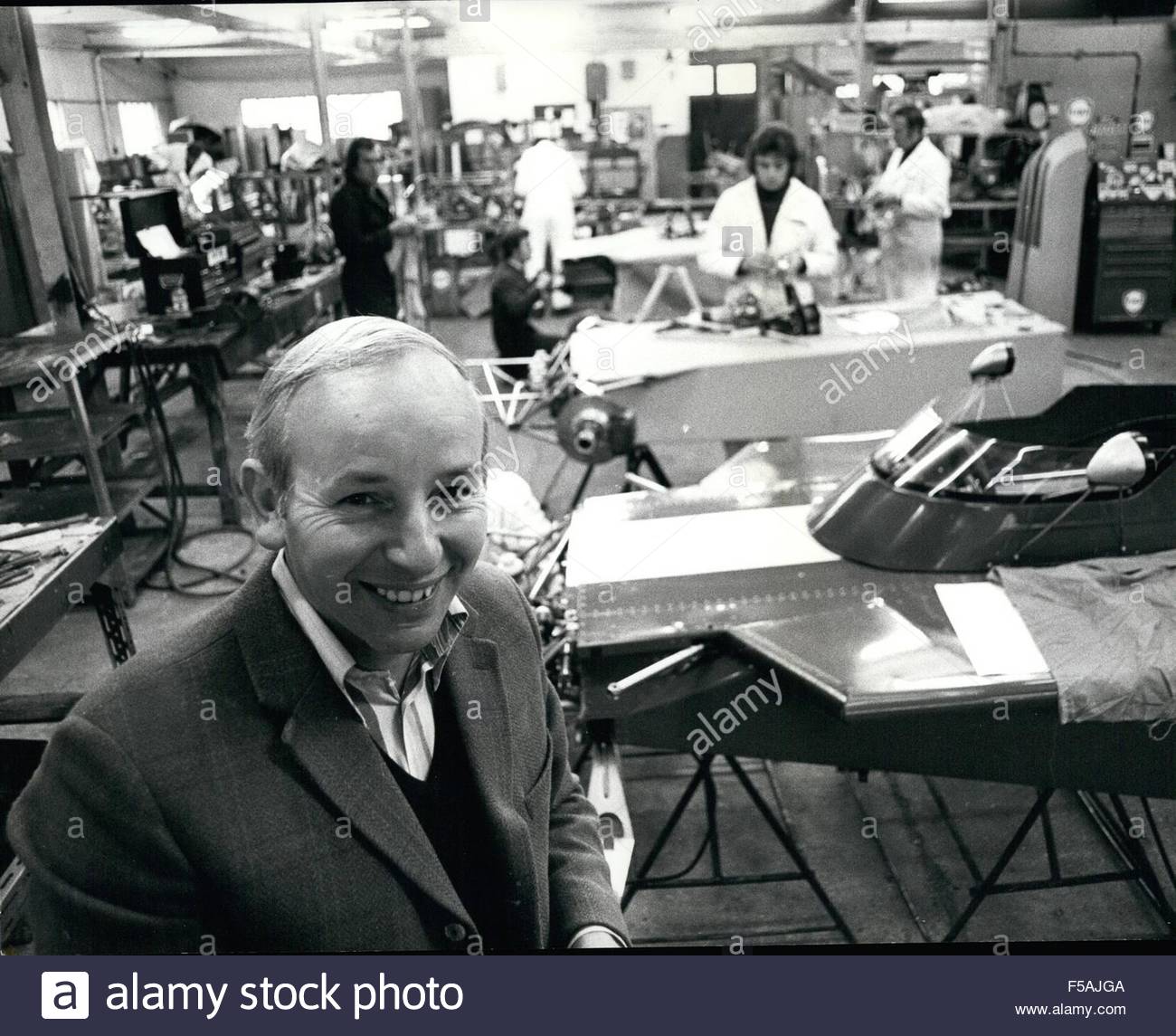
John Surtees in 1974.
His constant striving exacerbated medical problems (a legacy of his 1965 accident) that eventually forced Surtees out of Formula One racing in 1978.
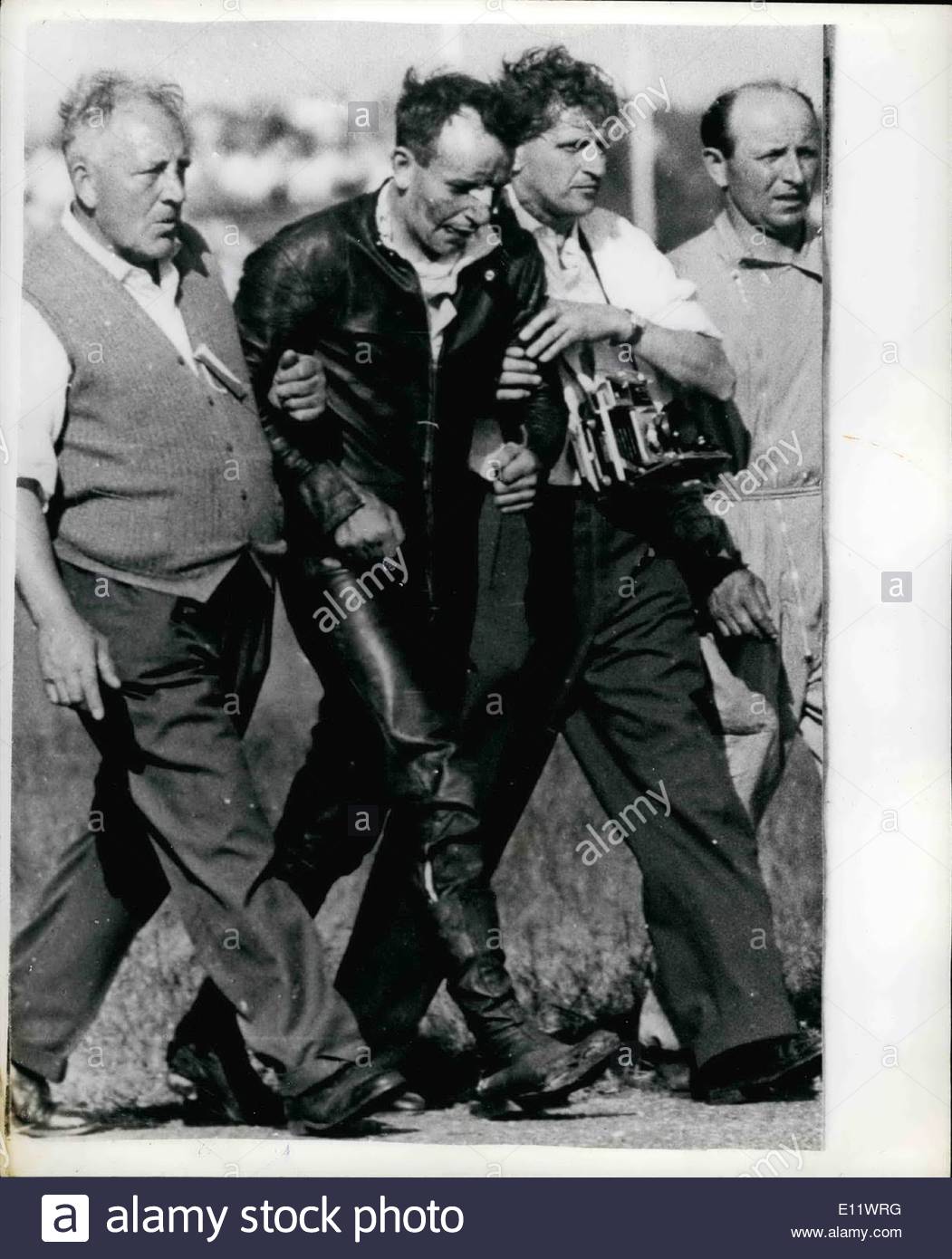
June 06, 1980. Lucky escape for John Surtees in Dutch Grand Prix.
His return to health gave him a new lease on life and the former curmudgeon mellowed considerably.
He retired to a beautiful old house in the English countryside, where with a new wife (his first marriage was childless) he raised a family of three. He developed an interest in architecture and was successful in real estate ventures. Only then was the one and only champion on two wheels and four able to fully enjoy his singular achievements - of which he said: "I was a bit nuts, really."
In his later years Surtees spent much of his time working tirelessly for The Henry Surtees Foundation, set up after his son was tragically killed in a freak accident in a Formula Two race in 2009. He passed away peacefully with his family by his side in March 2017.
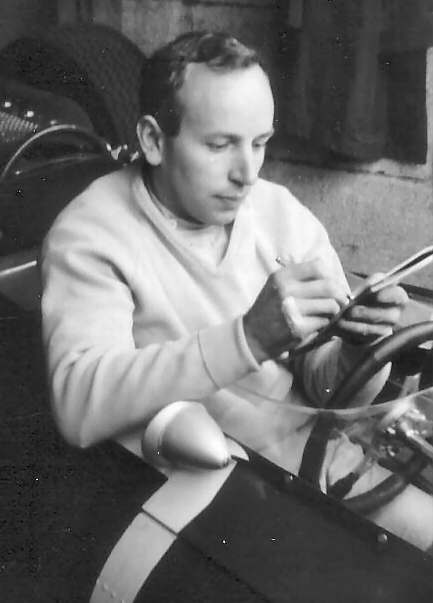
John Surtees was a four-time 500 cc motorcycle World Champion - winning that title in 1956, 1958, 1959 and 1960 - and the F1 World Champion in 1964. He founded the Surtees Racing Organisation team that competed as a constructor in Formula One, Formula 2 and Formula 5000 from 1970 to 1978.
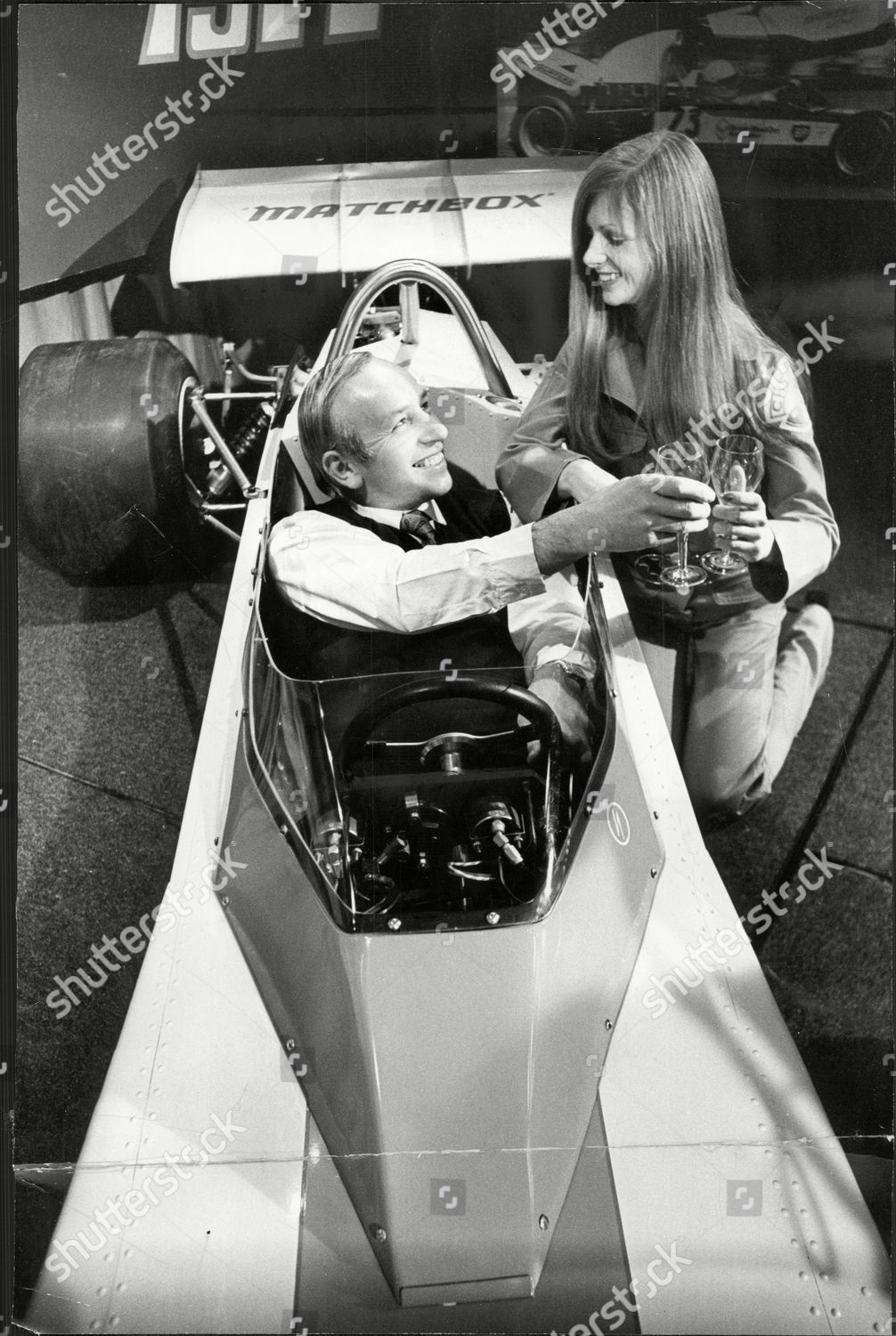
John Surtees in his new Formula 2 car gets a champagne toast from model Rebecca Shott.
He was also the ambassador of the Racing Steps Foundation.
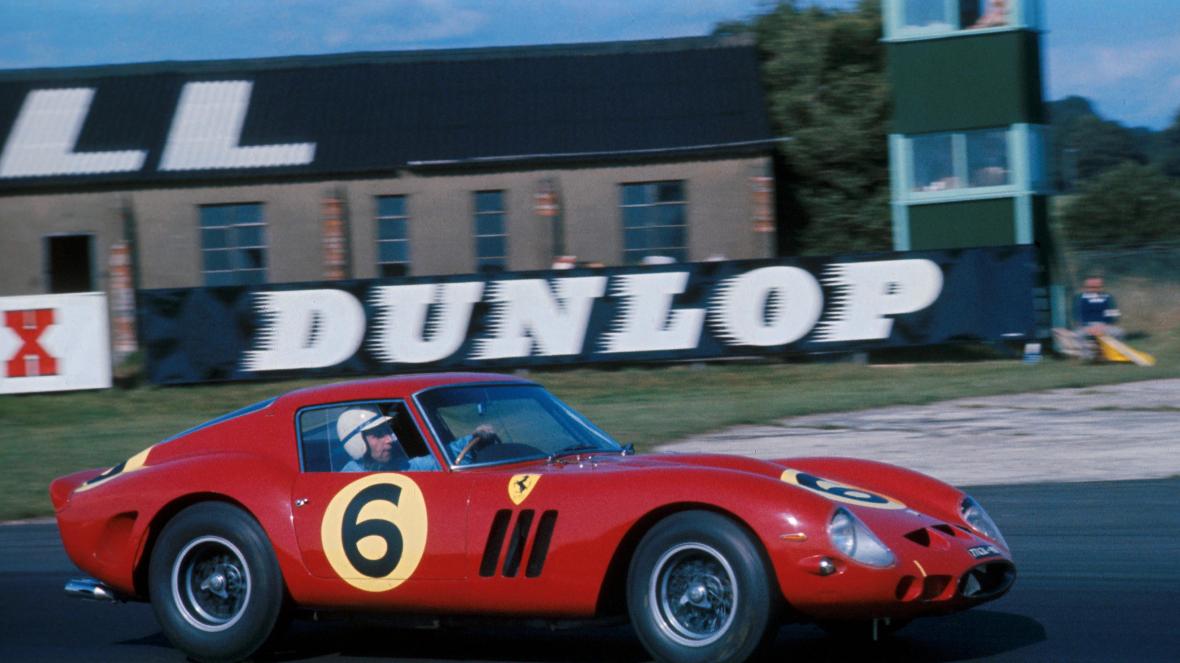
John Surtees racing a Ferrari 250 GTO at Goodwood in 1962. SUTTON MOTORSPORT IMAGES
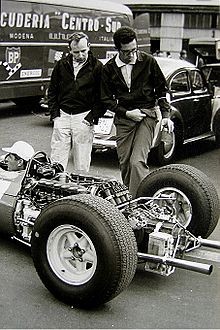
Surtees (left) and Mauro Forghieri in 1965.
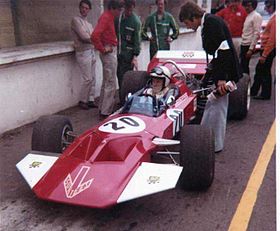
Surtees at the wheel of the Surtees TS7.
His first road race was on a pre-war Triumph 250 at Brands Hatch in 1950. Just as it began to rain Surtees took the lead going into Paddock Bend and promptly fell off. Later at the Aberdare Park circuit in South Wales, he scored his first win. Surtees would later comment that, "of all the races I did in my life, that was probably the one that had the most effect on me. For the first time I was no longer just a mechanic who rode a bike. The bike and I became one. We spoke to each other, we were exchanging messages through the seat of my pants. I realized that’s what you need to get the best from a piece of machinery. It shaped the mould for the rest of my racing career." Surtees made headlines in 1951 when he gave Norton star Geoff Duke who was known as the "Iron Duke" a strong challenge in an ACU race at the Thruxton Circuit, something that Norton race chief Joe Craig would remember four years later when he gave the 20-year old a sponsored ride with the famous British team.
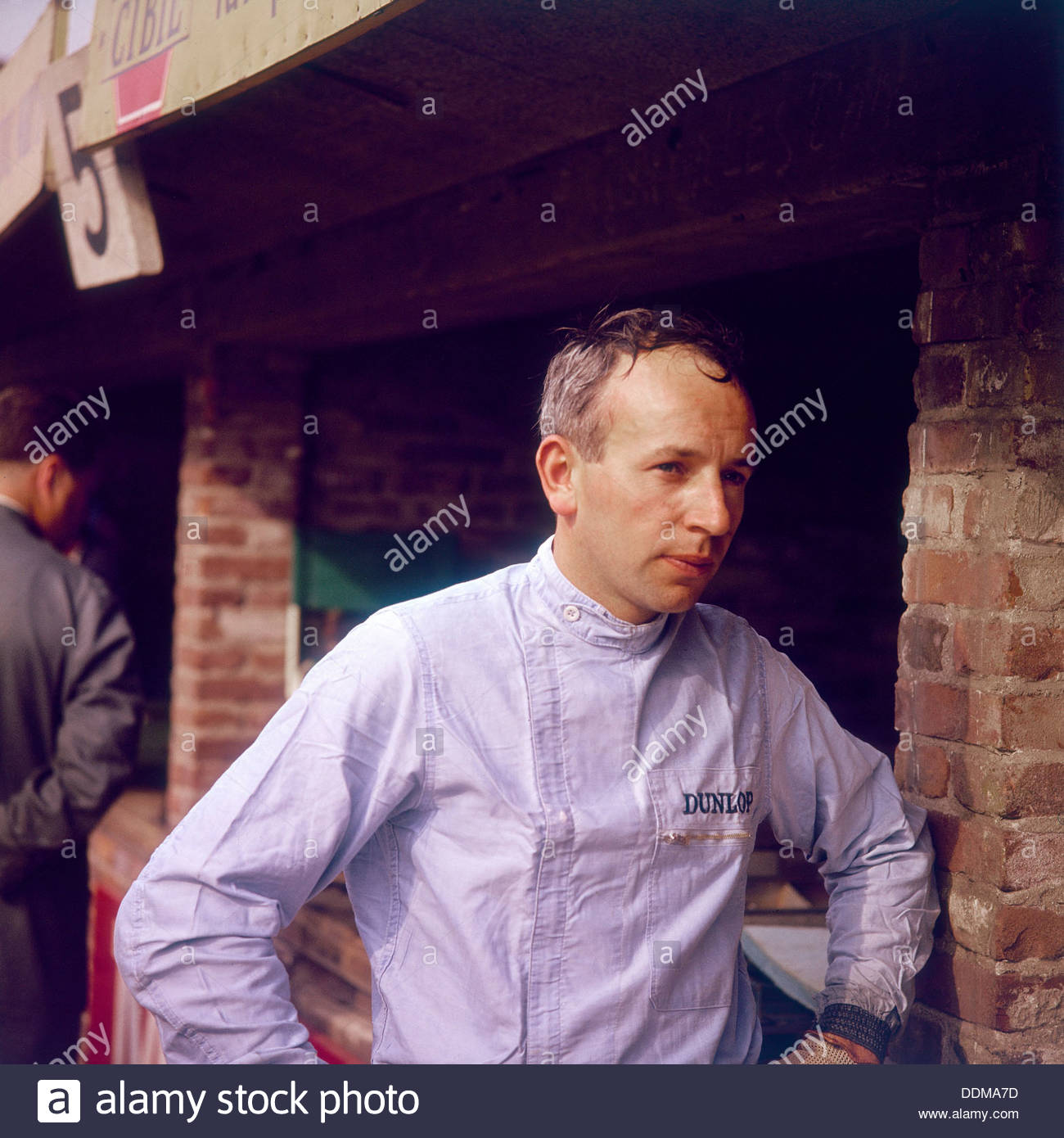
While still racing motorcycles full-time, Surtees performed a test drive in Aston Martin's DBR1 sports car in front of team manager Reg Parnell. He however continued on two wheels and did not enter car racing until the following year.
"In fact I only got involved with cars by accident. It had been suggested to me before, but I always considered myself a motorbike rider. But then MV Augusta restricted my bike programme - I wasn't allowed to ride my own bikes on the British circuits because the Italian media said it was me winning, not MV. I thought there was nothing to stop me from doing some car races and in fact my first race came about through being introduced to Ken Tyrrell, who promptly told me he had already entered me for Goodwood and spoken to the RAC about my licence. What did I have to say? 'Why not!' recalled Surtees in a later interview.
In 1960, at the age of 26, Surtees switched from motorcycles to cars full-time, making his Formula 1 debut racing in the 1960 BRDC International Trophy at Silverstone for Team Lotus. He made an immediate impact with a second-place finish in only his second F1 World Championship race, at the 1960 British GP and a pole position at his third, the 1960 Portuguese GP.
After spending the 1961 season with the Yeoman Credit Racing Team driving a Cooper T53 "Lowline" managed by Reg Parnell and the 1962 season with the Bowmaker Racing Team, still managed by Reg Parnell but now in the V8 Lola Mk4, he moved to Scuderia Ferrari in 1963 and won the World Championship for the Italian team in 1964.

Oct 10 1965. John Surtees arrives home after his crash in Canada.
On 25 September 1965, Surtees had a life-threatening accident at the Mosport Park Circuit (Ontario, Canada) while practising in a Lola T70 sports racing car. A front upright casting had broken. A.J. Baime in his book “Go Like Hell” says Surtees came out of the crash with one side of his body four inches shorter than the other. Doctors set most of the breaks nonsurgically, in part by physically stretching his shattered body until the right-left discrepancy was under an inch – and there it stayed.
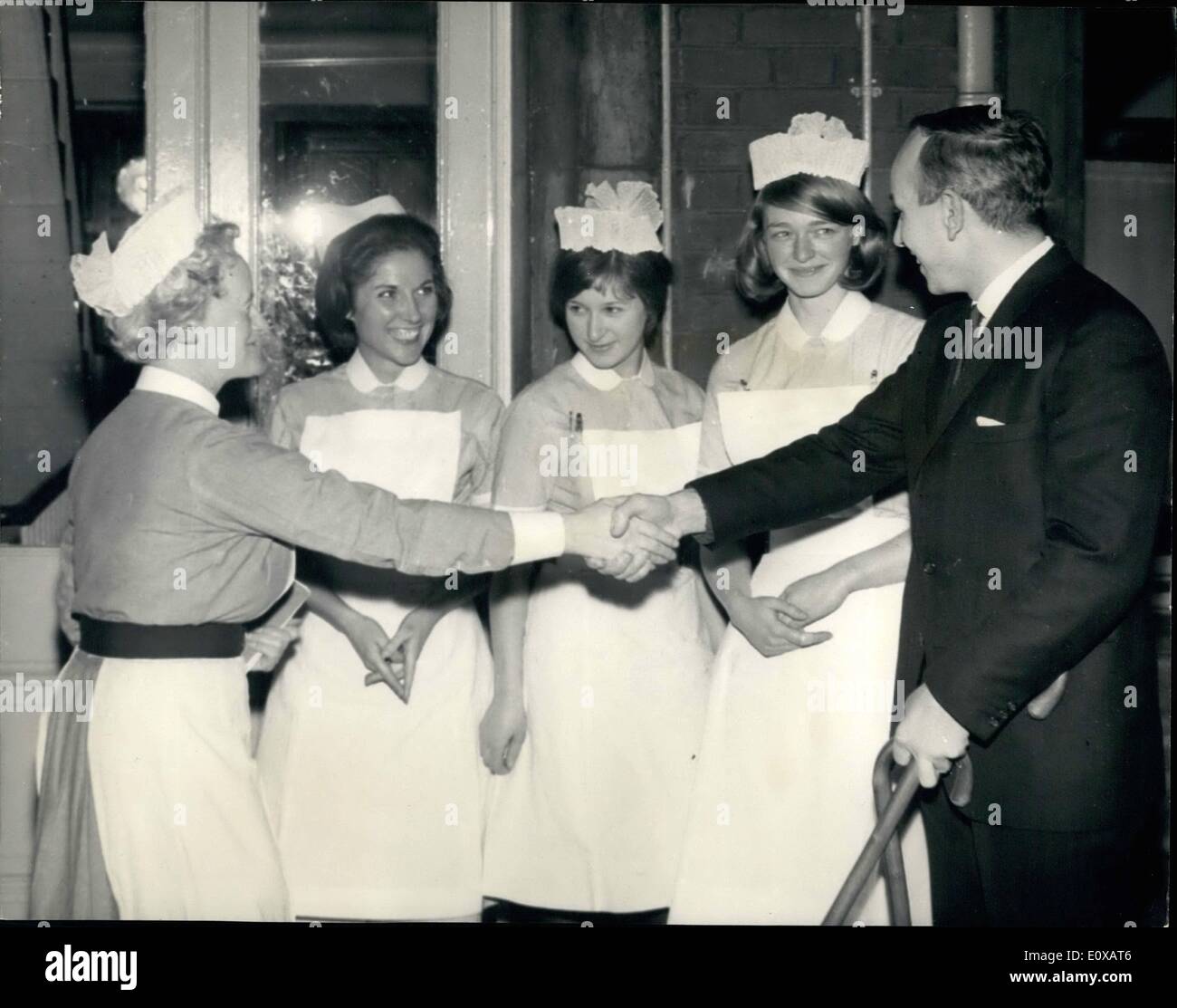
Former world champion racing driver John Surtees is leaving St. Thomas's Hospital on 31 January 1966. A hospital statement said: ''he is not yet fully discharged from the care of the hospital and will convalesce abroad until early March, when he will come back to St. Thomas Hospital for examination. On his return he will give awful statement on his racing plans and commitments of his doctors with the recovery he is making from the serious injuries he sustained in a crash at Mosport, Canada last year.”
The 1966 season saw the introduction of new, larger 3-litre engines to F1. Surtees's debut with Ferrari's new F1 car was at the 1966 BRDC International Trophy at Silverstone, where he qualified and finished a close second behind Jack Brabham's 3-litre Brabham BT19. A few weeks later, Surtees led the Monaco GP, pulling away from Jackie Stewart's 2-litre BRM on the straights, before the engine failed. A fortnight later Surtees survived the first lap rainstorm which eliminated half the field and won the Belgian GP.
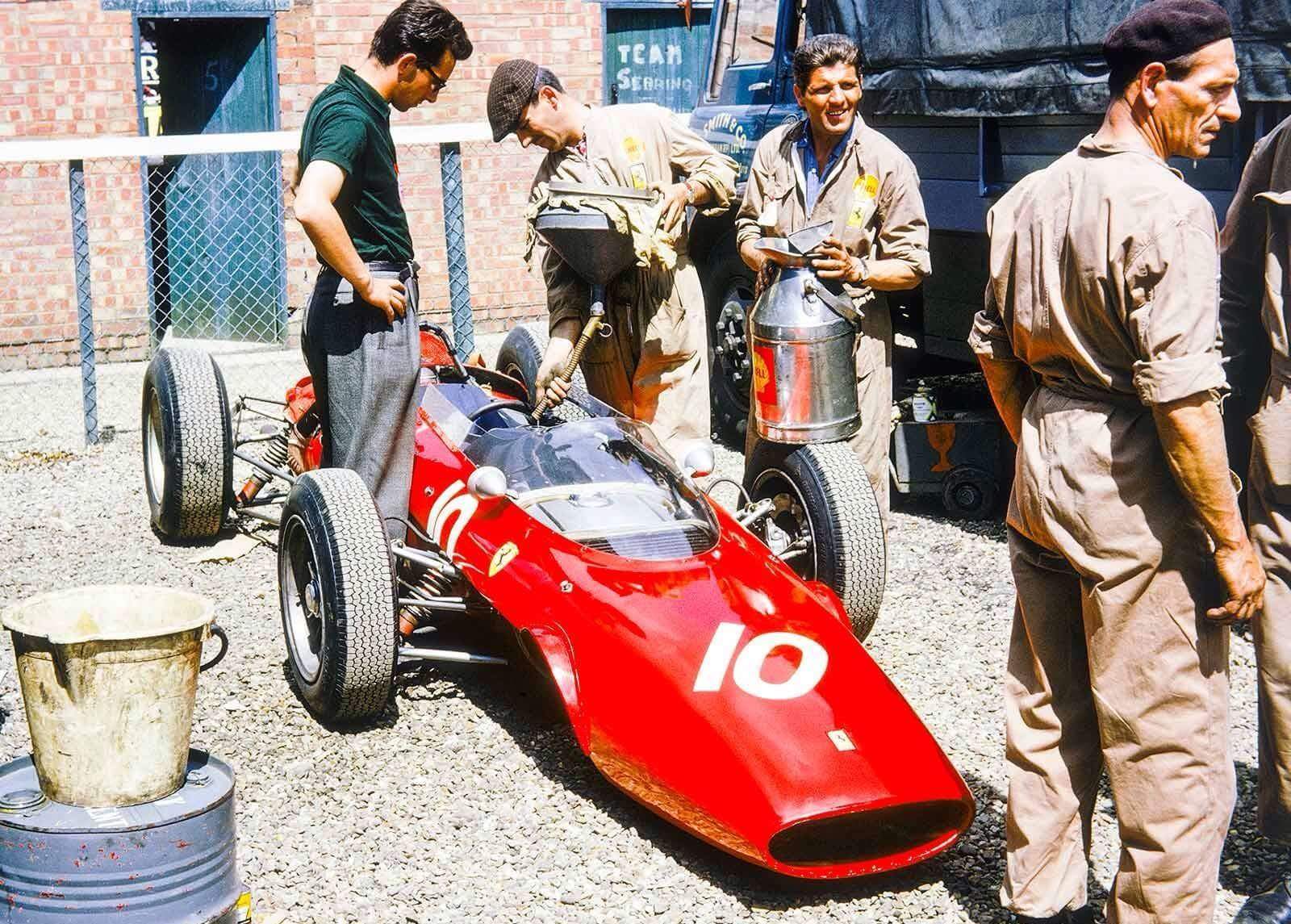
Ferrari mechanics at British Grand Prix, 1963.

A mechanic with bodywork from John Surtees Ferrari 157 at Silverstone.
Ever since 1963 Surtees had been at odds with team manager Eugenio Dragoni. Ferrari for their part was suspicious of Surtees' relationship with Lola's Eric Broadley whose Lola T70 competed with Ferrari's sports cars.
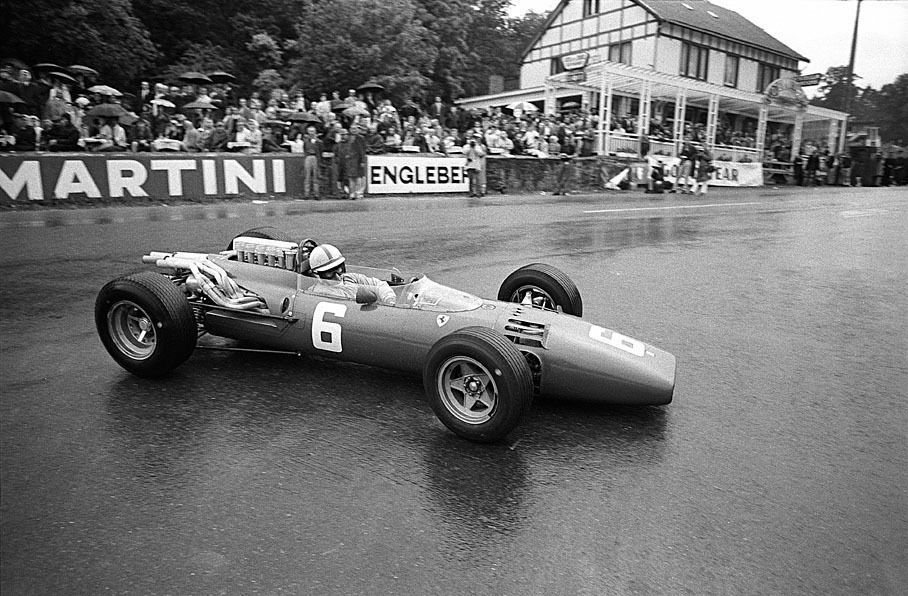
Due to perennial strikes in Italy, Ferrari could afford to enter only two cars (Ferrari P3s) for the 1966 24 Hours of Le Mans instead of its usual entry of three prototypes. Uncertainty and confusion surrounds subsequent events and their consequences and a number of different explanations have been offered in the decades since.
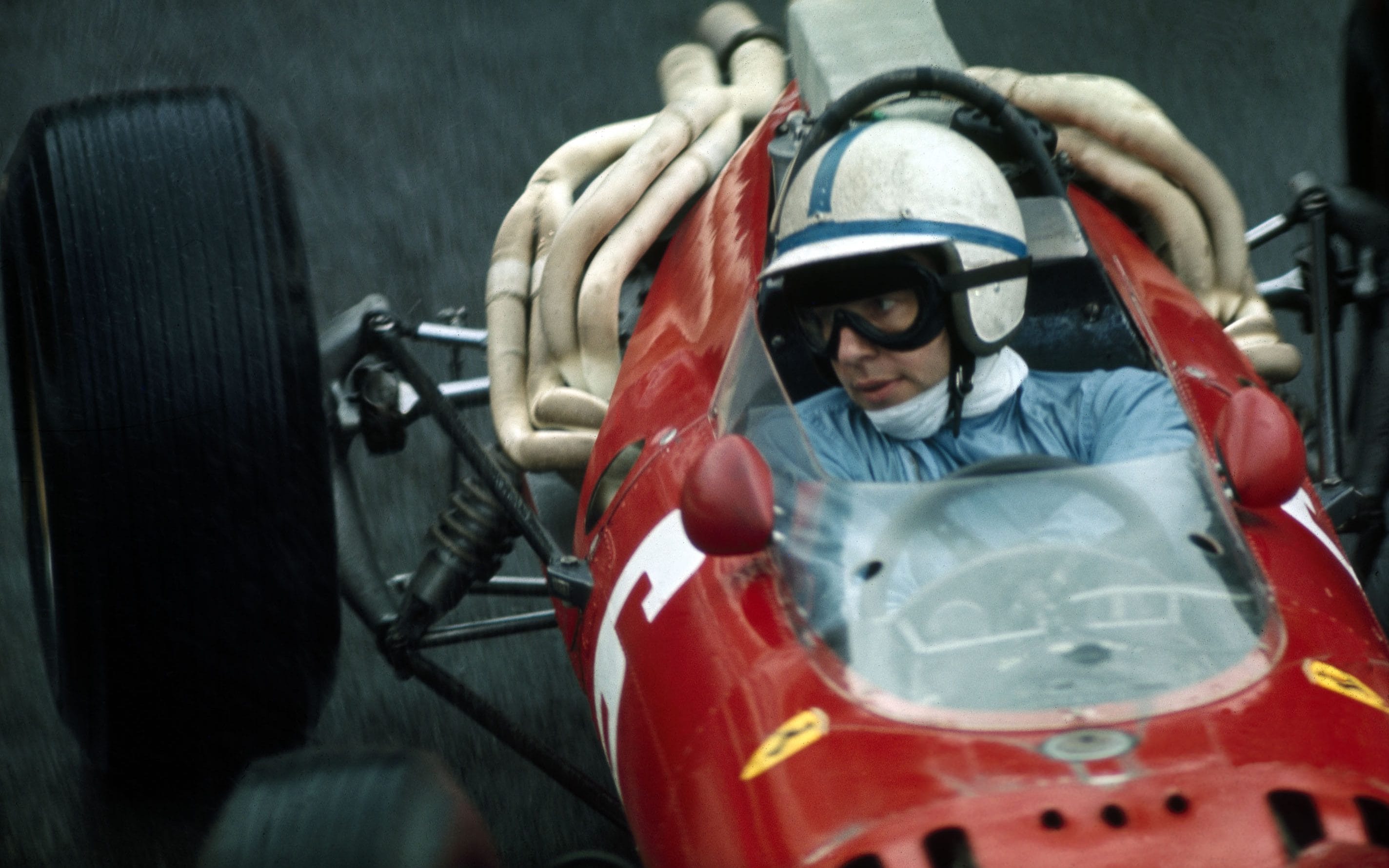
The narrative explained by Ferrari at the time states that under Le Mans rules in 1966 each car was allowed only two drivers. Surtees was omitted from the driver line-up with one works Ferrari to be driven by Mike Parkes and Ludovico Scarfiotti and the other by Jean Guichet and Lorenzo Bandini.
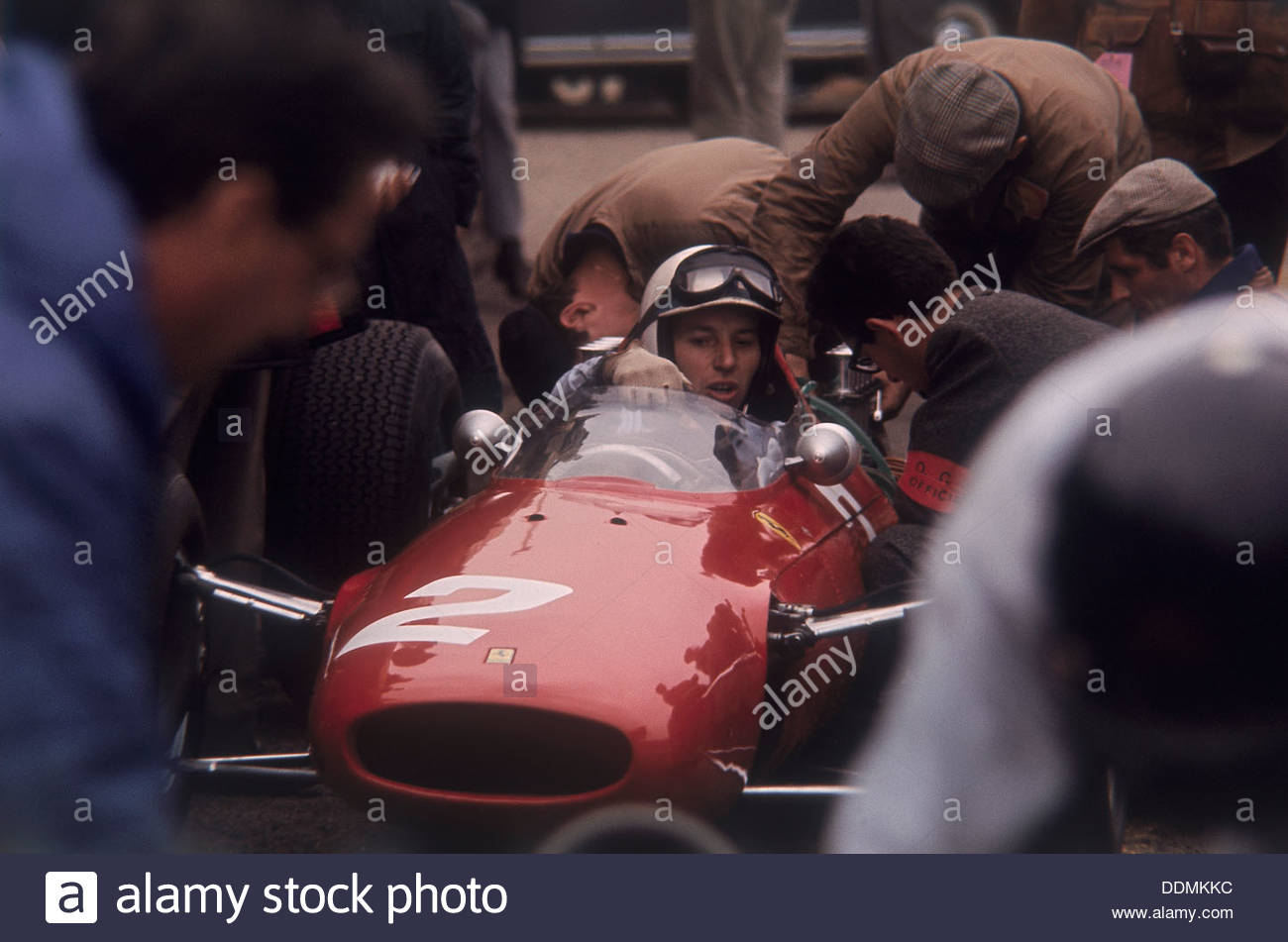
When Surtees questioned Ferrari team manager Eugenio Dragoni as to why, as the Ferrari team leader, he would not be allowed to compete, Dragoni told Surtees that he did not feel that he was fully fit to drive in a 24-hour endurance race because of the injuries he had sustained in late 1965. However, Surtees himself described things somewhat differently. In his recollection, when the pairings were announced he was to drive alongside Scarfiotti.
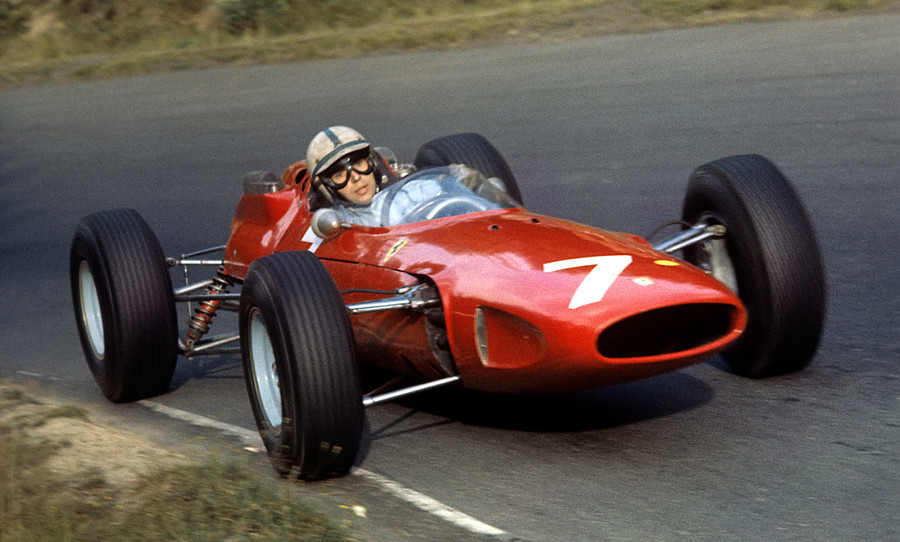
As the faster driver of the two, Surtees argued that he should take the first stint and "try to break" the Ford opposition by driving "flat out from the start". Dragoni denied Surtees's request and insisted that Scarfiotti take the start, supposedly to please Fiat chairman Gianni Agnelli, Scarfiotti's uncle, who was in attendance as a spectator. This may have been the proverbial straw that broke the camel's back.
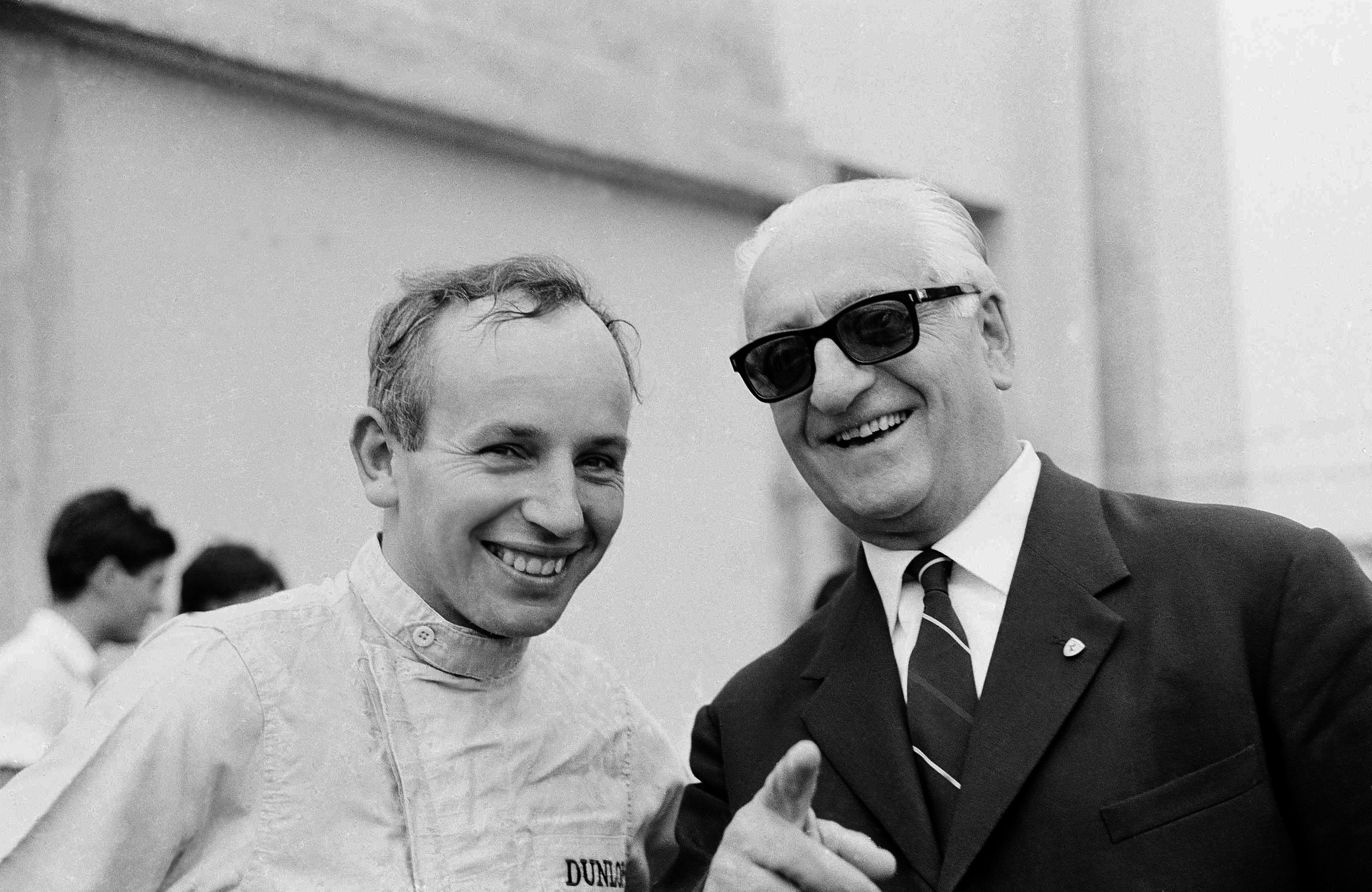
John Surtees and Enzo Ferrari.
Either way, the decision and subsequent lack of support from Enzo Ferrari himself were deeply upsetting to Surtees and he immediately quit the team.
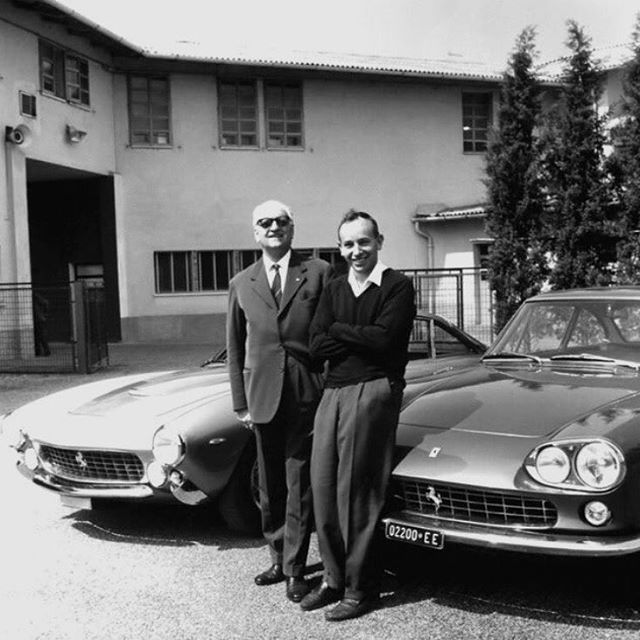
John Surtees with Enzo Ferrari.
Eventually, he agreed along with Enzo Ferrari that their split was a disastrous mistake for both parties. "I could probably have won another two or three world championships if I had stayed with Ferrari," Surtees later admitted.
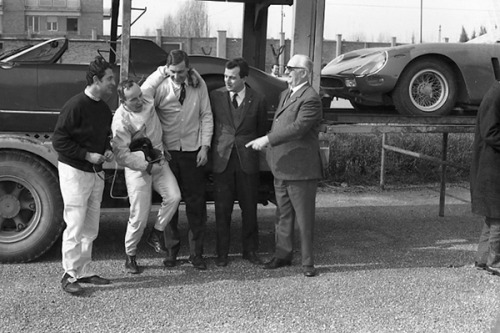
John Surtees with Enzo Ferrari.
In effect this decision likely cost both Ferrari and Surtees the Formula 1 Championship in 1966. Ferrari finished second to Brabham-Repco in the Constructors' Championship and Surtees finished second to Jack Brabham in the Drivers' Championship. Surtees finished the season driving for the Cooper-Maserati team, winning the last race of the season.
Surtees competed with a T70 in the inaugural 1966 Can-Am season, winning three races of six to become champion over other winners Dan Gurney (Lola), Mark Donohue (Lola) and Phil Hill (Chaparral) as well as the likes of Bruce McLaren and Chris Amon (both in McLarens).
In December 1966, Surtees signed for Honda. After a promising third place in the first race in South Africa, the Honda RA273 hit a series of mechanical problems. The car was replaced by the Honda RA300 for the Italian GP, where Surtees slipstreamed Jack Brabham to take Honda's second F1 victory by 0.2 seconds. Surtees finished fourth in the 1967 Drivers' Championship.
The same year, Surtees drove in the “Rex Mays 300” at Riverside, near Los Angeles, in a United States Auto Club season-ending road race. This event pitted the best American drivers of the day — normally those who had cut their teeth as professional drivers on oval dirt tracks — against veteran Formula One GP drivers, including Jim Clark and Dan Gurney.
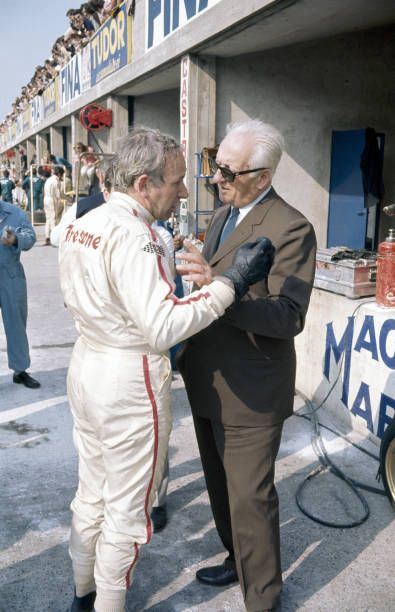
John Surtees with Enzo Ferrari, Italian Grand Prix '70.
In 1970, Surtees formed his own race team, the Surtees Racing Organisation, and spent nine seasons competing in Formula 5000, Formula 2 and Formula 1 as a constructor. He retired from competitive driving in 1972, the same year the team had their greatest success when Mike Hailwood won the European Formula 2 Championship. The team was finally disbanded at the end of 1978.
For a while in the 1970s Surtees ran a motorcycle shop in West Wickham, Kent and a Honda car dealership in Edenbridge, Kent. He continued his involvement in motorcycling, participating in classic events with bikes from his stable of vintage racing machines.
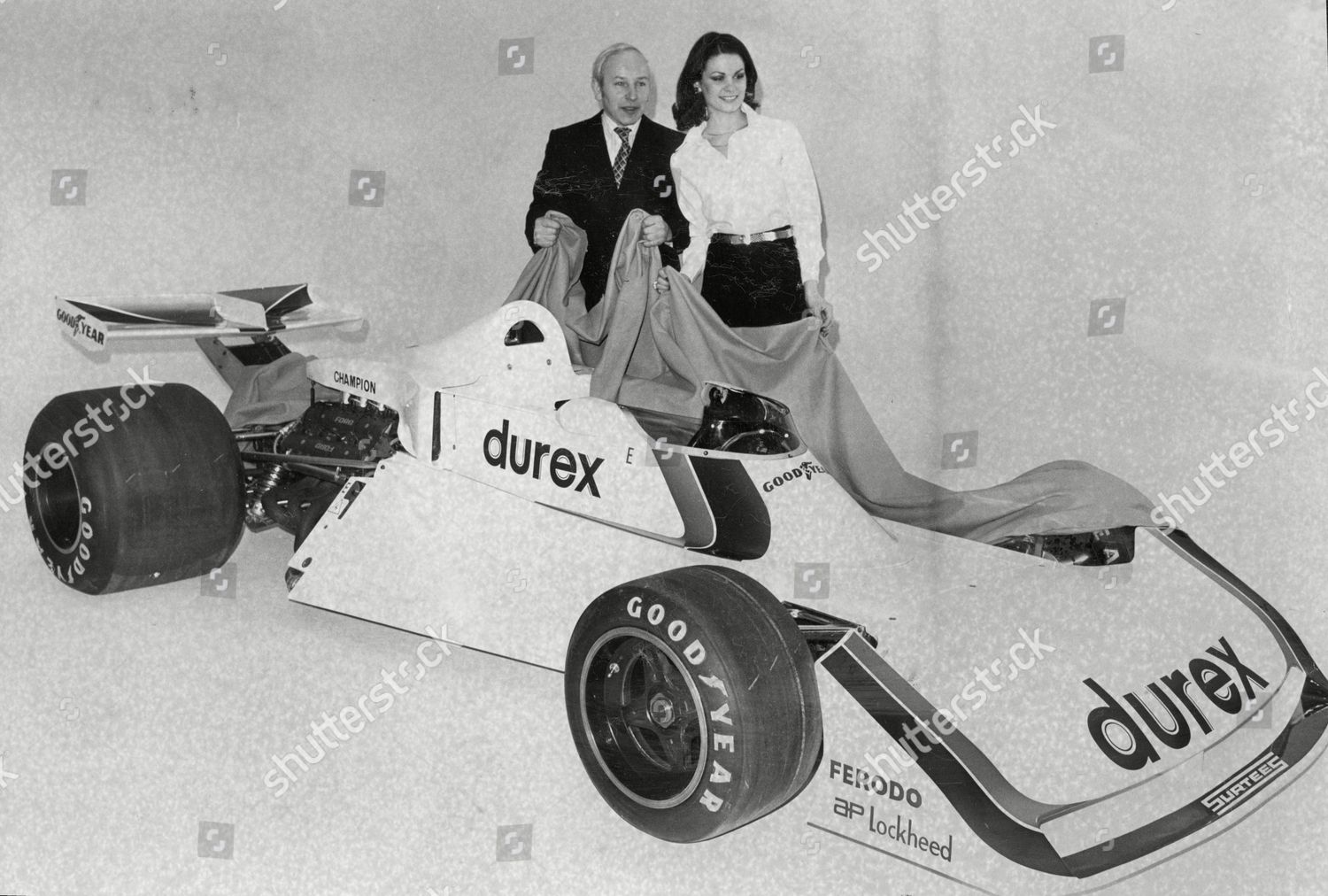
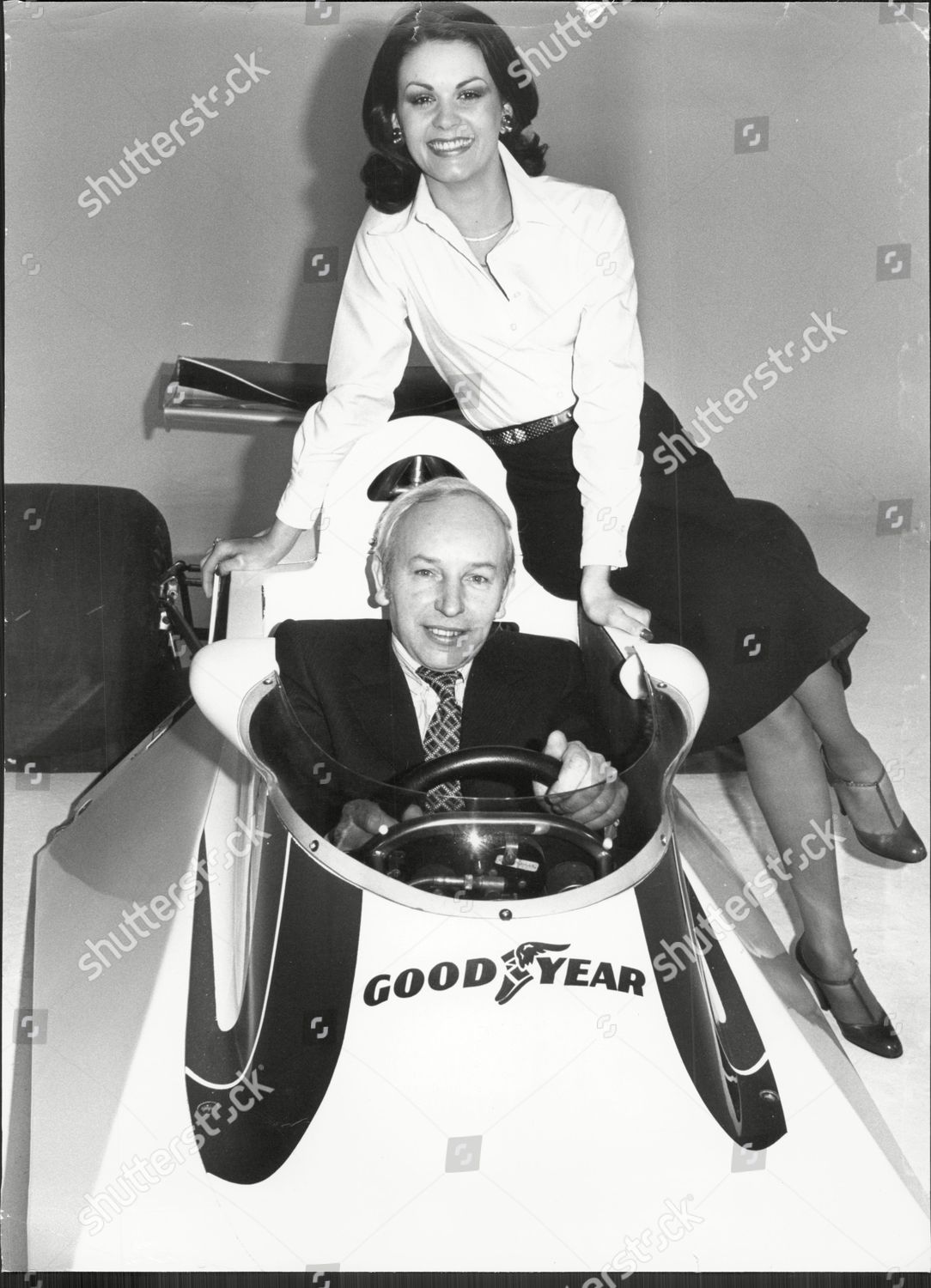
February 18,1976. John Surtees and model Vicki Harris launch a new racing car sponsored by Durex. Shutterstock-editorial-1734281a.
He also remained involved in single-seater racing cars and held the position of chairman of A1 Team Great Britain, in the A1 GP racing series from 2005 to 2007.
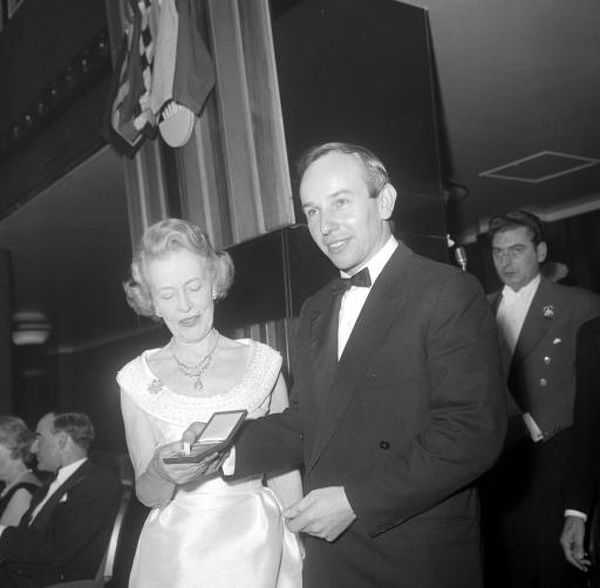
The Duchess of Richmond and Gordon presents John Surtees with the British Automobile Racing Club's Gold Medal for outstanding achievement motor racing by a British Subject.
He was the subject of “This Is Your Life” in 1992 when he was surprised by Michael Aspel.
In 1996, Surtees was inducted into the International Motorsports Hall of Fame.
In 2015, he was awarded the honorary degree of Doctor of Engineering by Oxford Brookes University.
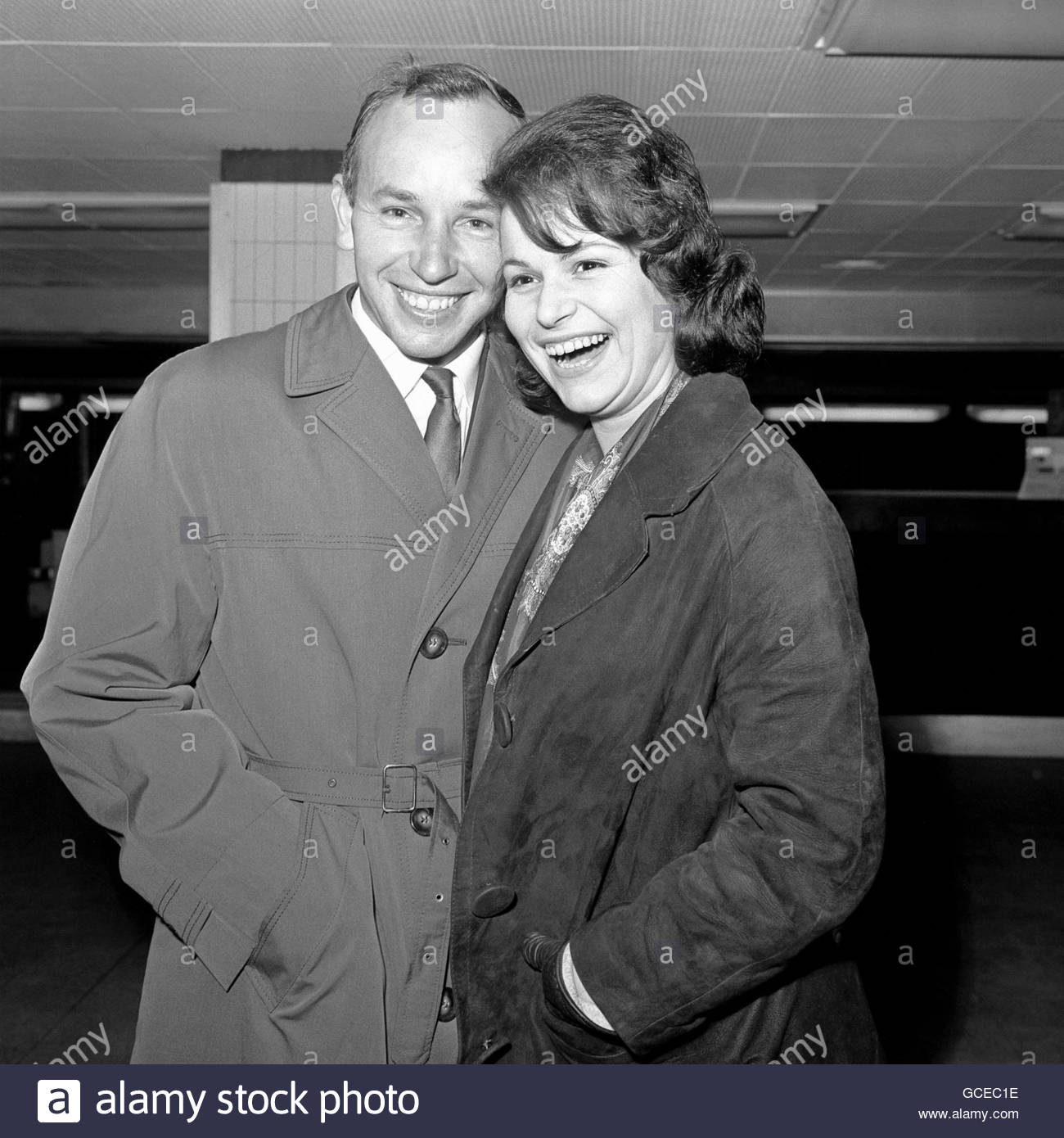

John Surtees and Patricia Burke.
Surtees married three times, first to Patricia Burke in 1962; the couple divorced in 1979.

John Surtees and his second wife Janis Sheara.
His second wife was Janis Sheara, whom he married in 1979 and they divorced in 1982. Jane Sparrow was his third wife, whom he married in 1987, and with whom he had three children, Leonora, Edwina and Henry.
Surtees died of respiratory failure on 10 March 2017 at St George's Hospital in London, at the age of 83. He was buried, next to his son Henry, at St. Peter and St. Paul's Church in Lingfield, Surrey.
A tribute to Surtees was held at the Goodwood Members Meeting on 19 March 2017
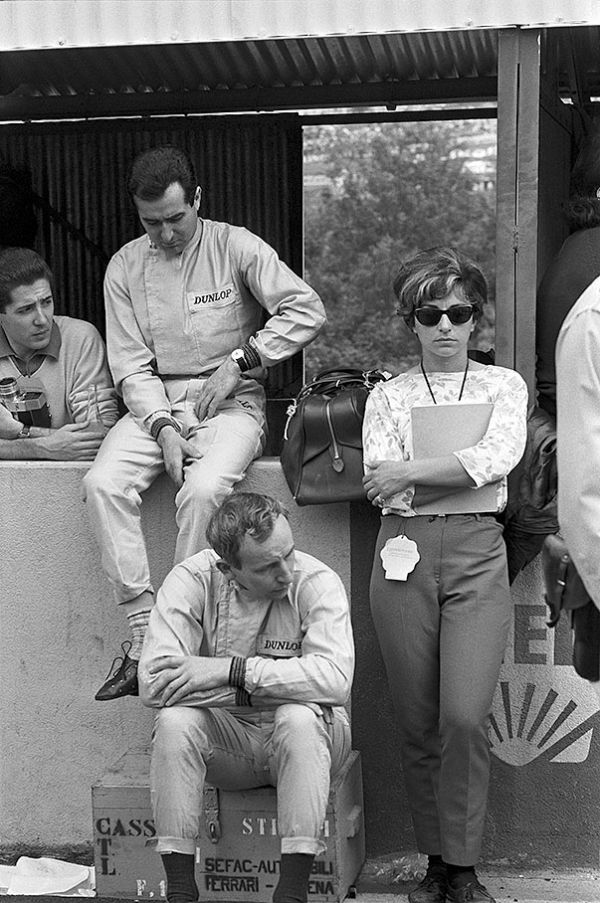
The life and times of John Surtees, as told by the man himself. Gentleman's Journal spoke with the late motoring maestro just a few months before his death.
Talent is a word often misused in the world of sport. Defined as ‘an innate ability’ – something instinctual and inherited rather than learned – there are, in fact, very few people to whom the term can be correctly attributed. John Surtees CBE, however, is one of them.
I was fortunate enough to have met him. Initially, we were introduced in the race control building at Goodwood circuit – the very place where his four-wheeled career started in 1959. He smiled, shook my hand and we chatted a while. His slight frame was disguised under a full, blue race suit. The second meeting, rather bizarrely, was at a Battle of Waterloo-themed ball, where again he wore blue, only a full 19th-century Bourgeois court costume instead of a race suit. On the third and what would turn out to be the final occasion I spoke to him, it was a glorious summer’s day. His memory and the way he articulated responses were as clear as the sky that day. What we’d planned to be a 20-minute interview turned into an hour-long discussion covering everything from his remarkable achievements to his deepest regrets.
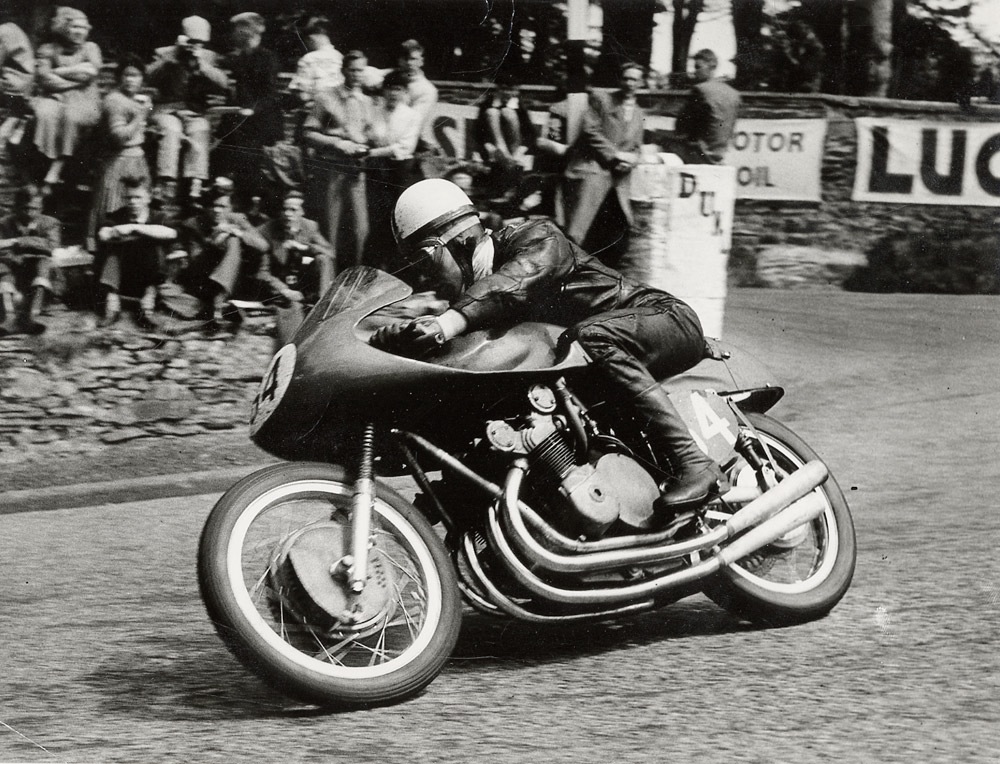
John Surtees on Mv Agusta.
‘I was around 11 or 12 years of age when my father said to me, “Lad, there’s a box of tools there and a box of parts over there – put it together and you can have it”.’ And with that, Surtees had earned his own 1932 Wallace Blackburn motorcycle. With a bike at the ready, it wasn’t far for Surtees and his father to travel out to Brands Hatch, the local racing circuit.
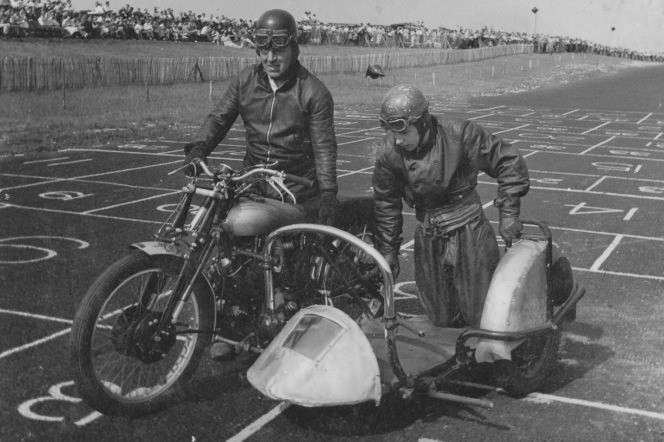
‘It was a grass track in those days but I used to race around the cinder track, outside of the grass circuit. It rained and I fell off on almost every corner. My father said, “Lad, I think it’s a little big for you”,’ he says fondly.
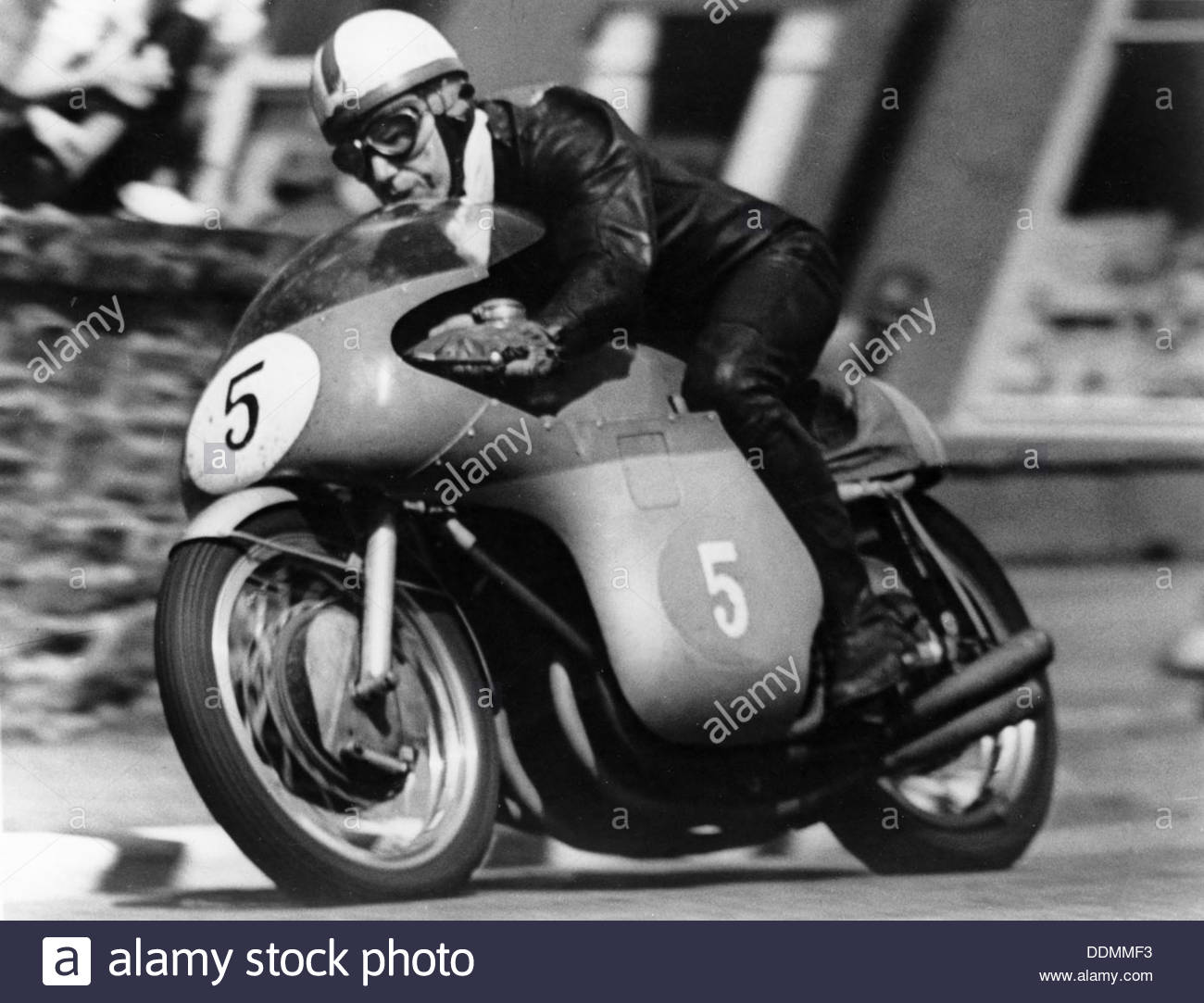
John Surtees winning the Isle of Man Junior TT on an MV Agusta in 1959.
In the 1950s, Brands Hatch was tarmacked and turned into a road-racing circuit. ‘I used to race there on my 250 Triumph. There was another familiar chap who took part in that race, too. He was called Bernie Ecclestone.’
A few years senior to Surtees, Ecclestone was born in Suffolk but grew up in the town of Bexleyheath in south London. The two had first met when Surtees’ father arrived on Ecclestone’s doorstep in 1947 to purchase a 250cc Excelsior Manxman. Ecclestone was repairing the bike in the kitchen. Aged 17 at the time, he’d left school a year earlier to earn a living selling second-hand motorbikes. After that initial meeting, fate would have it that both Surtees and Ecclestone would cross paths many times.
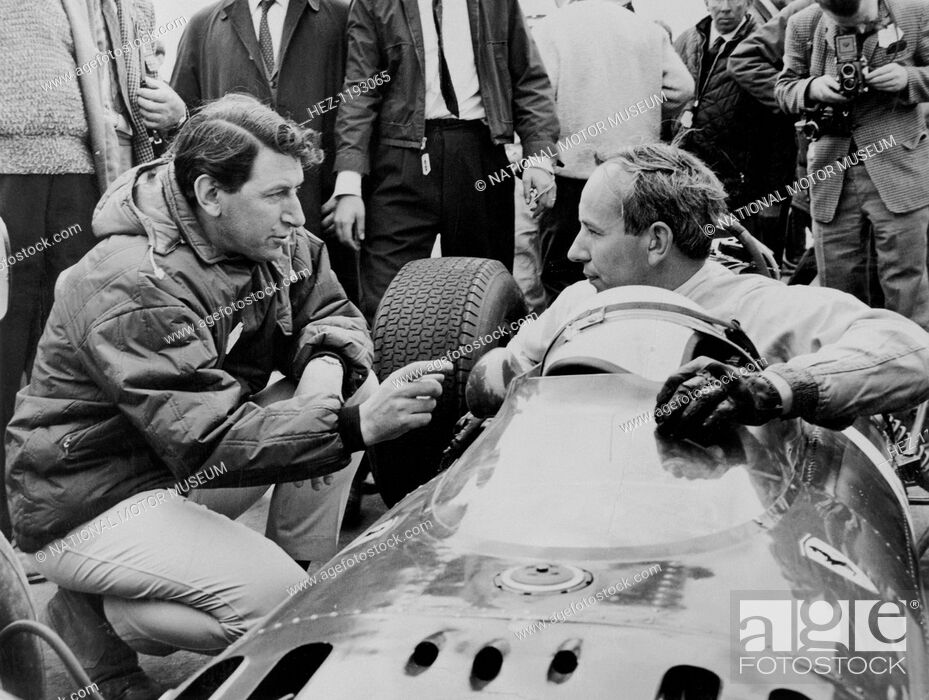
As the son of a racer, mechanic and shop owner, Surtees opted to spend his school years with tools rather than textbooks. ‘I always loved working with spanners and making things. Perhaps I spent too long focusing on that instead of school,’ he says with a chuckle. ‘I took my little Triumph bike down to Silverstone and the conrod broke half way through the first corner. That had me on my back and the engine in pieces. Then, a [broken] Vincent HRD came to me one day, for a good price. I was earning £2.10 a week back then, so I had bugger all to spare but I did some weekend work and put it back together. That was the launchpad to my career.’
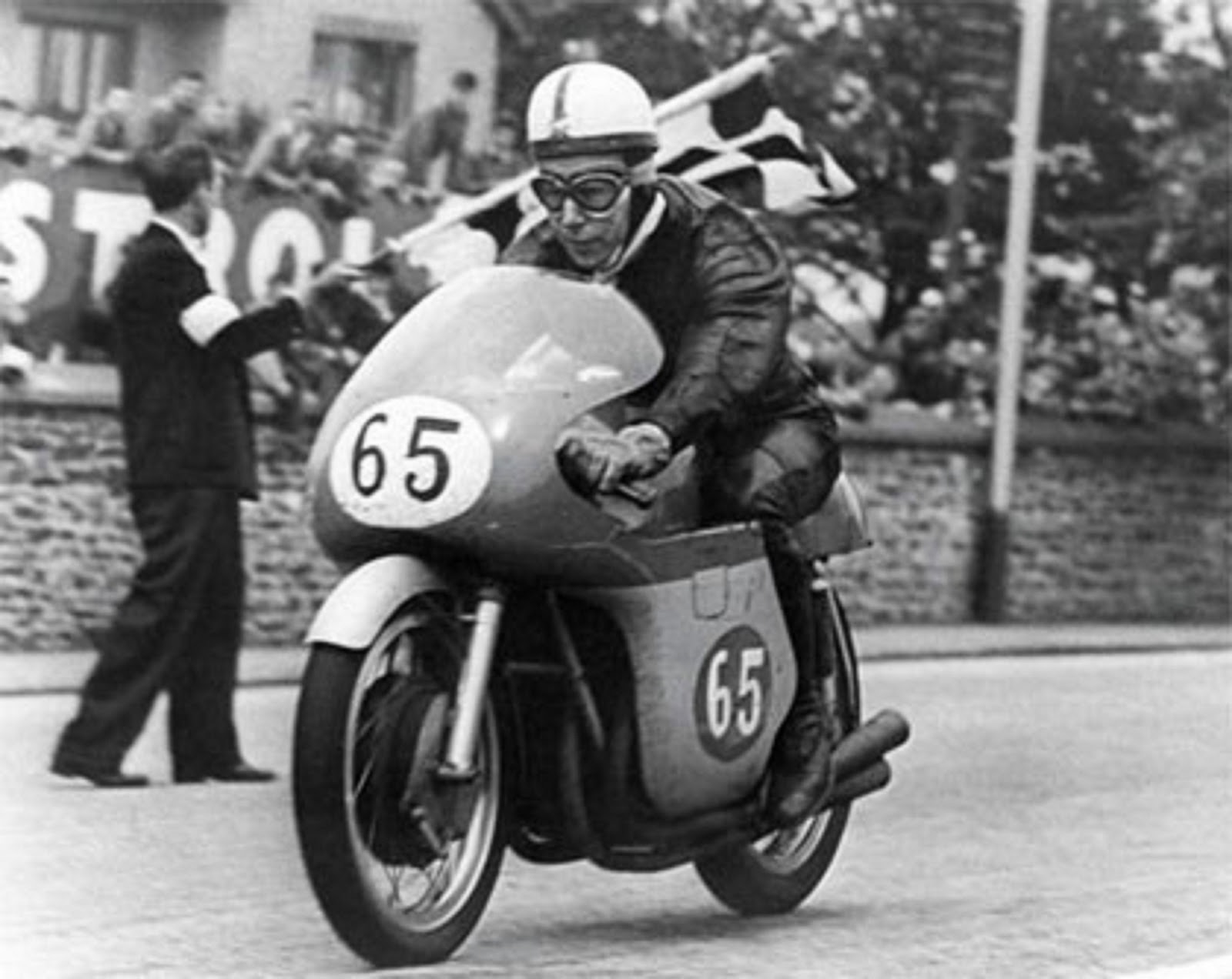
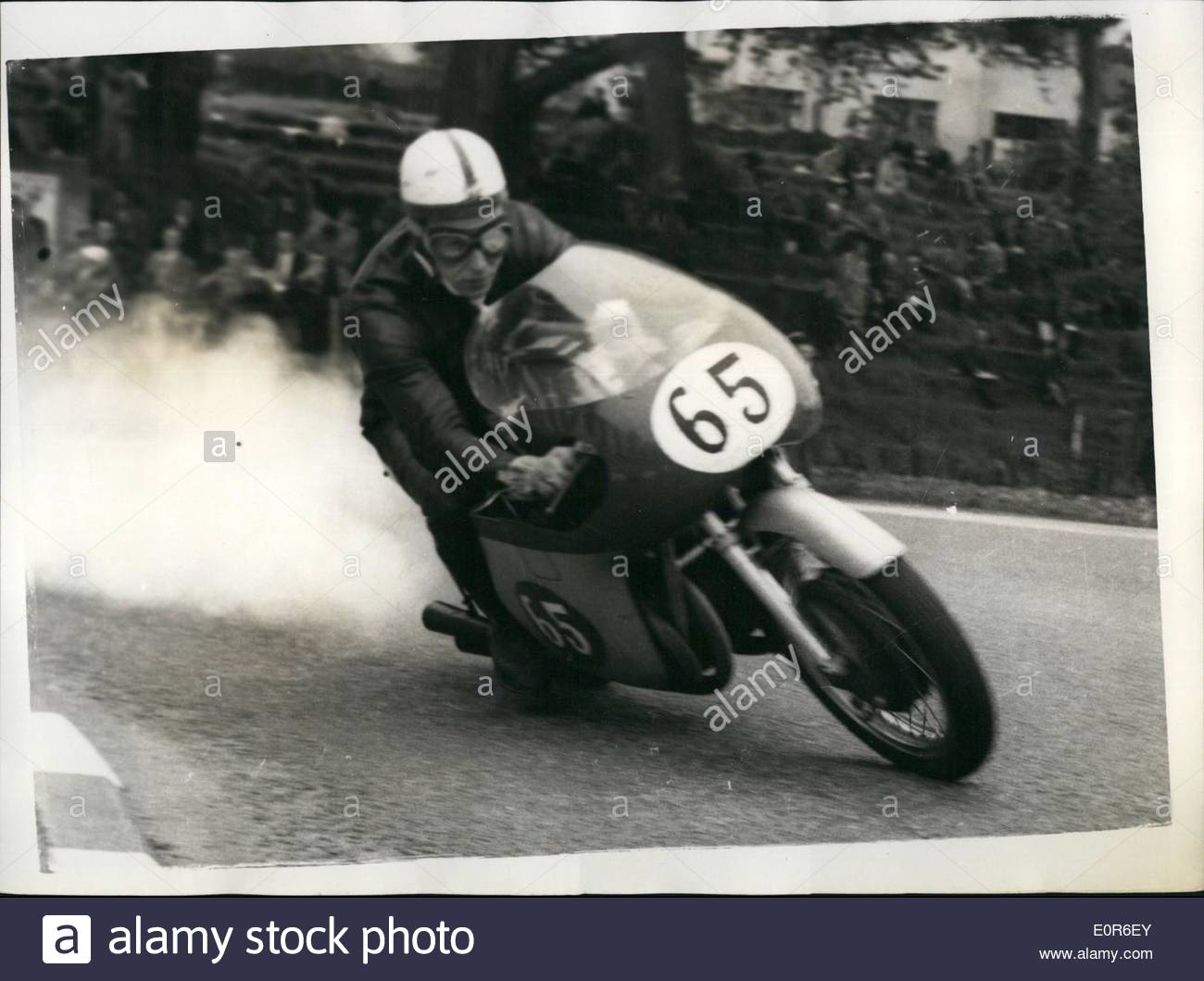
Jun 06-1958 Surtees wins the senior TT.
‘By 1952, I had acquired a Norton and they asked me to do a major international event with it. I got my first championship points with that bike and went on to do more than 80 races between 1954 and 1955 before I joined the Norton team. With them, I took part in 74 races and I won 70 of them,’ he says nonchalantly. Winning, as is clear, came naturally to the young rider, setting him apart from the rest as a promising British sportsman.
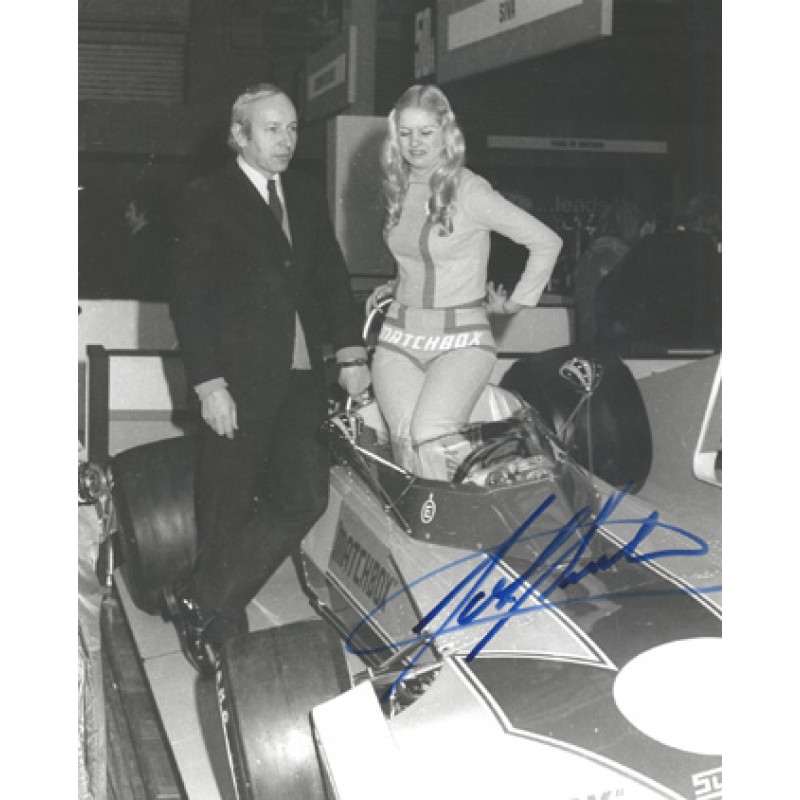
In 1959, just short of 10 years on from the moment Surtees came together with the bike, he acquired his first taste of four-wheeled motorsport. ‘I was invited to go to Goodwood to race one day and I came second.’ He finished behind the legendary driver – but then promising beginner – Jim Clark. ‘After that, Colin Chapman, one of the founders of the UK motor-racing scene and Lotus boss, came up to me and asked if I’d try Formula One. I said I couldn’t, as I was doing motos at the time, but he simply replied: “well, try it when you’re not!”’
With that, Surtees’ career in four-wheeled motorsport had begun. Before he’d barely become acquainted with the scene, he came second in the 1960 British Grand Prix. ‘I had no problems with the speed – that came naturally – but one of the biggest problems was getting to know people both on and off the track. It’s essential to know your competitors on track but it’s probably off track that I made some of my biggest mistakes,’ he admits.
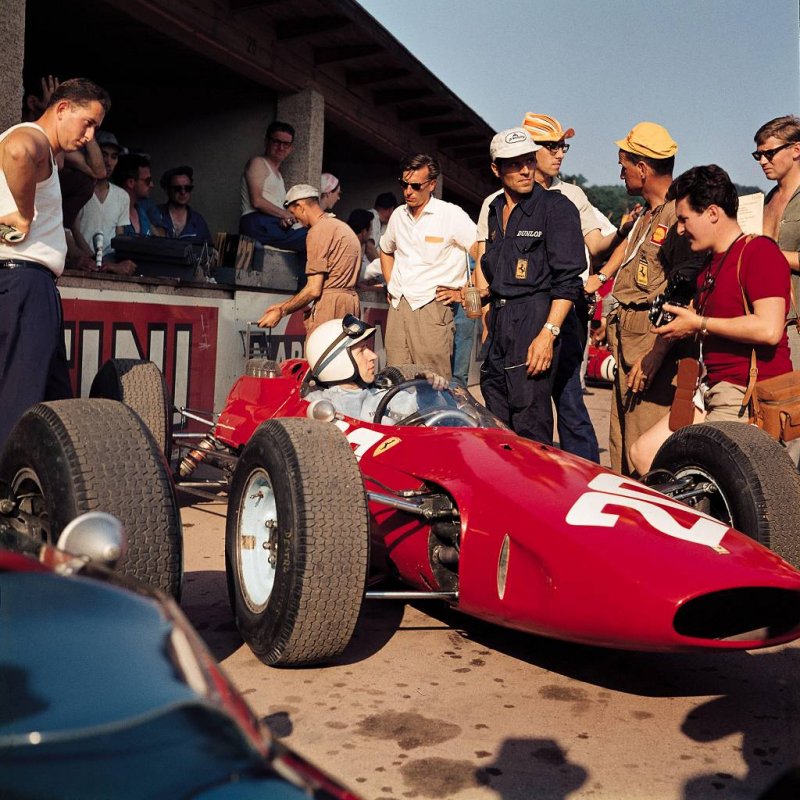
Surtees had developed a reputation for being rather argumentative and hard to work with. After signing with Ferrari in 1963, for example, he’d never seen eye-to-eye with their manager Eugenio Dragoni and he famously quit the team after a ferocious argument with him on the eve of the Le Mans 24-hour race in 1966.
‘I think that I could have dealt with the situation with Ferrari in 1966 better,’ he recalls wistfully. ‘It was an emotional time for me.’
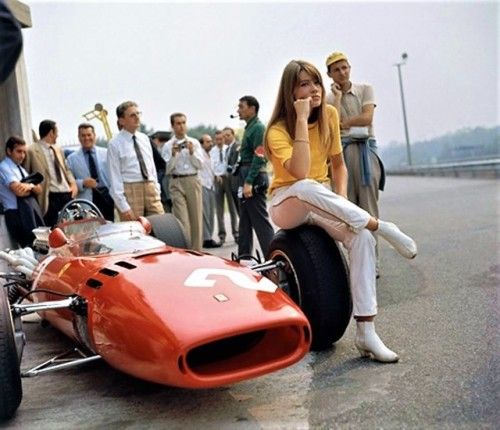
Francoise Hardy.
‘Some things have changed for the better and some for the worse,’ he says of the sport over the decades. ‘There was a lot that went on in my career that wasn’t necessarily a good thing. Making the cars safer is a move for the better and the money and development going into this has been a great thing. The problem is that the technology doesn’t filter down, which is how my son was killed.’ He doesn’t lament on the point, but it brings to a close his short reflection, resulting in silence. It’s a reminder that for all the glitz and glamour of motorsport it has, on all too many occasions, resulted in tragedy.
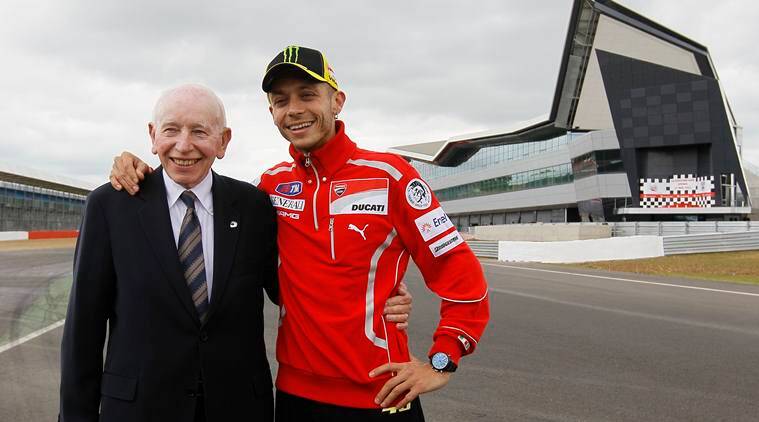
John Surtees and Valentino Rossi.
Despite his remarkable achievements in British motorsport and his charity work, Surtees was never awarded a knighthood, unlike some of his peers. As unjust as that may seem to fans, his legacy within the sport and the wider community is far greater than any three-letter suffix could define. He conquered the art of piloting a two-wheeled superbike around primitive post-war circuits before transferring seamlessly to the top-end of four-wheeled motorsport. In both, he achieved World Champion status by the time he was 30. He led race teams, including his own and battled with the political world of Formula One.
Despite surviving the ‘killer years’ of motorsport, he unjustly suffered in his later years through the freak death of his only son. A grim motivation, perhaps, but his boundless charity work has touched the lives of many. The checkered flag may have fallen on the life of the multi-talented master of motorsport, but his legendary legacy lives on, in full Surtees spirit, forever.
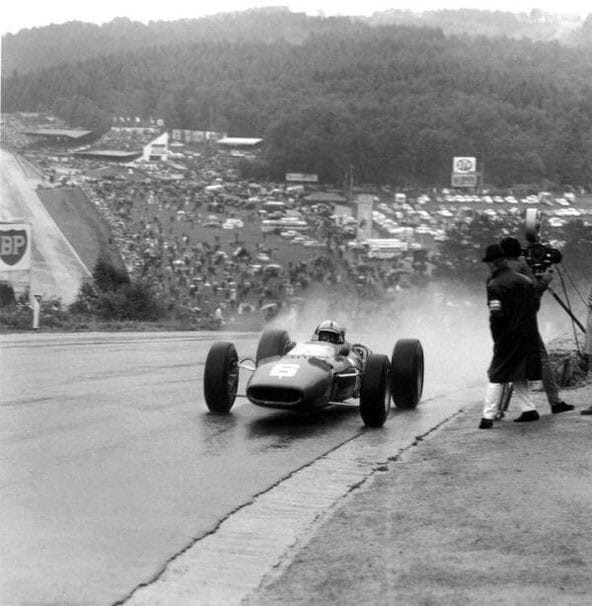
“Surtees was an incredible driver, capable of feats that I still struggle to explain to myself today. After winning seven world titles with the bike, he got into a Formula 1 single-seater in 1958 and, after three years, he managed to shine by joining Ferrari in 1963. He also raced for the Cooper-Maserati, winning the Mexican Grand Prix. His driving was affected by the motorcycling approach, proof of this is the Belgian Grand Prix. The finish straight at Spa was the great descent that leads to the deadly stretch of Eau Rouge, a wide curve on the left that continued uphill to the right. A very fast and very difficult transition. A point where the great drivers exalted themselves and the mediocre ones took their foot off the accelerator. Right there Clark, with a not very powerful 1500, was able to outpace everyone. But even Surtees was not joking. However, he set a very particular trajectory with respect to Clark. While the others arrived in the middle of the track and then moved to the left, he arrived almost touching the pits, then cut abruptly to the left to face the second part of the curve. The reason? Simple. That was the trajectory he used to travel as a centaur. Surtees also had another characteristic, the late braking to the limit. How particular, indeed incredible, John's way of using the brakes was emerged in the 1963 Monaco Grand Prix. He finished fourth, but did the fastest lap in the very last lap, the hundredth, when his car was brakeless. I still have before my eyes the incredulous expression of Sergio Vezzali who disassembled those brakes in Maranello: the pads were completely worn." Giulio Borsari, Ferrari chief mechanic
Videos
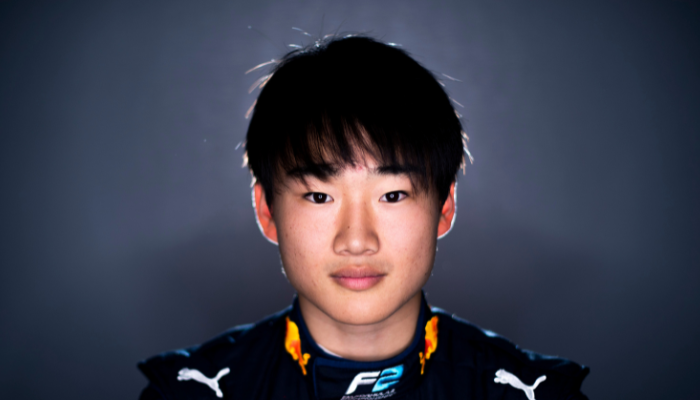
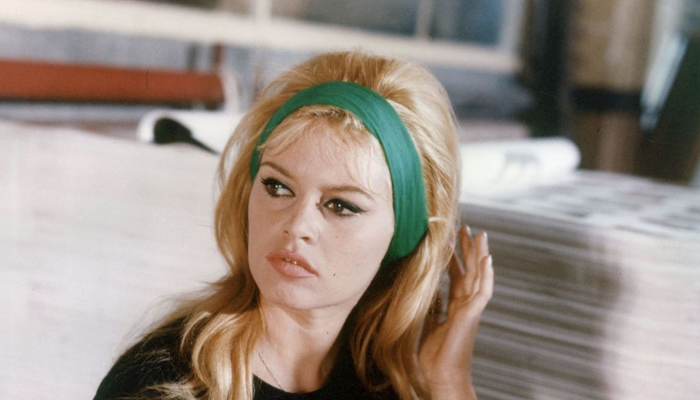
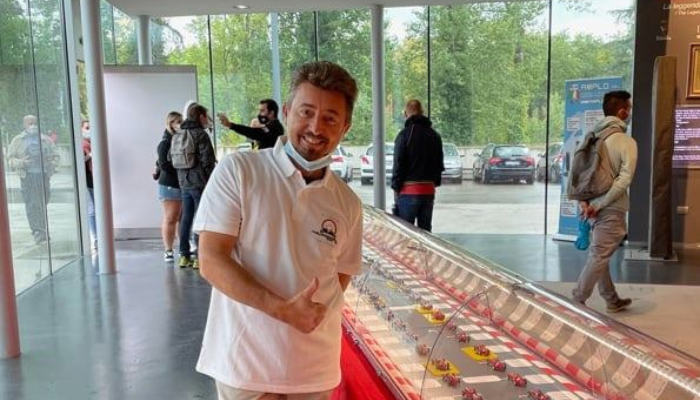
Comments
Authorize to comment